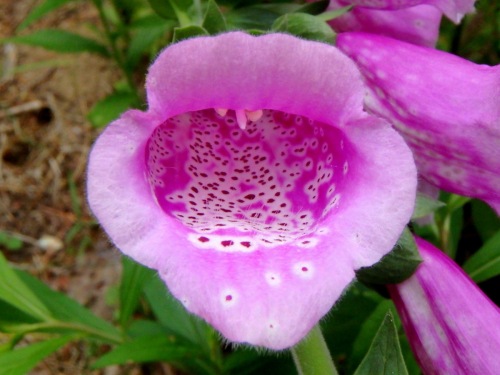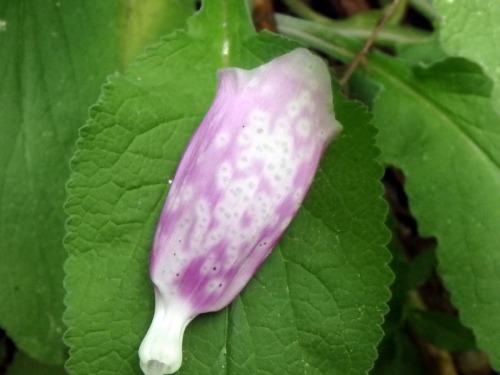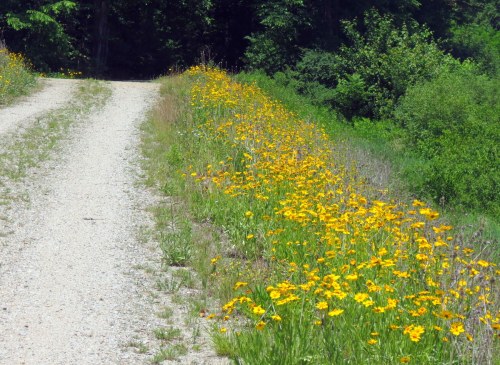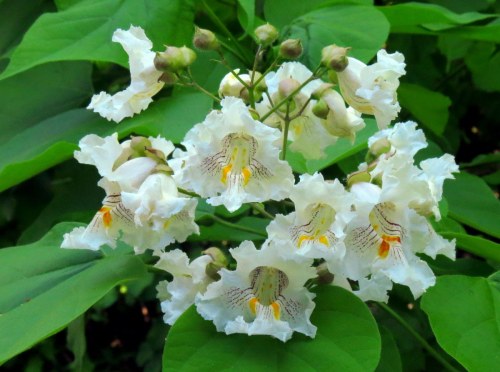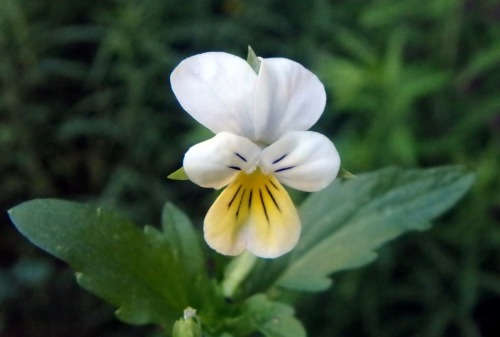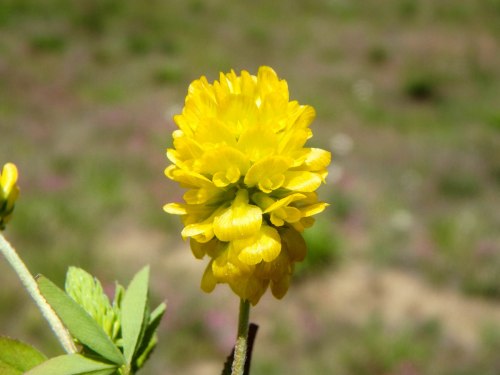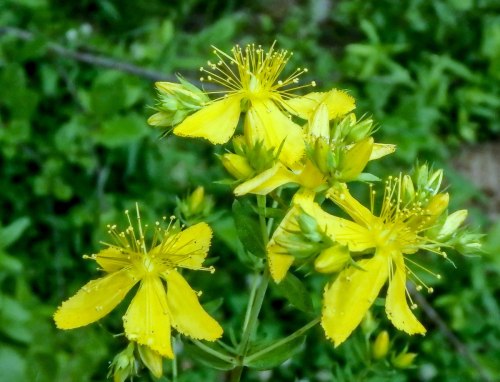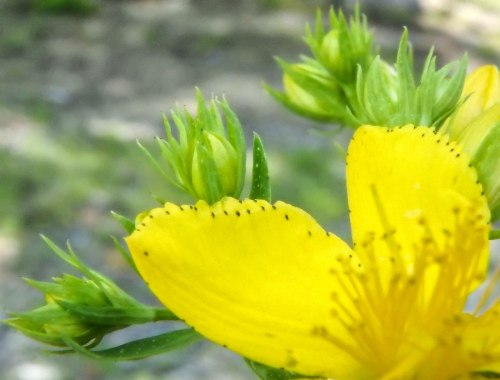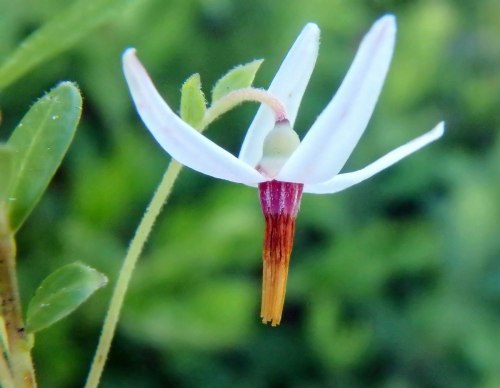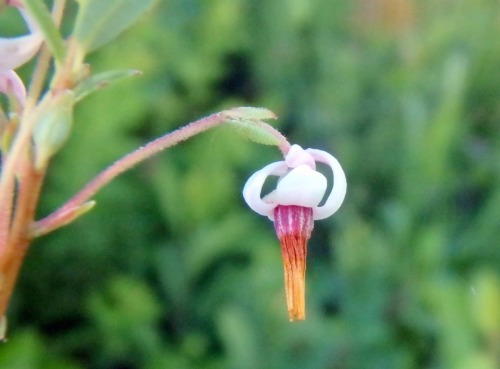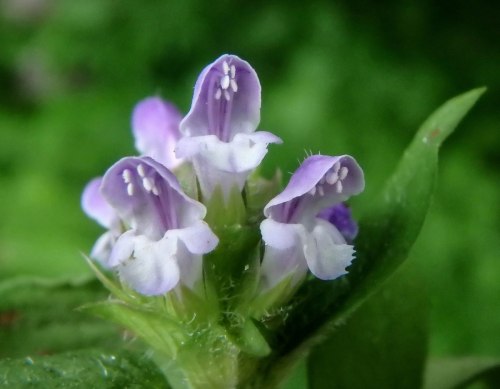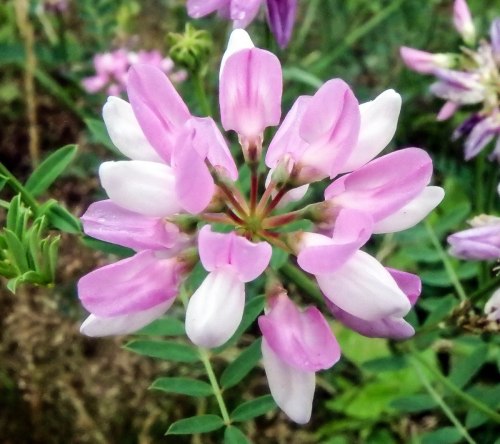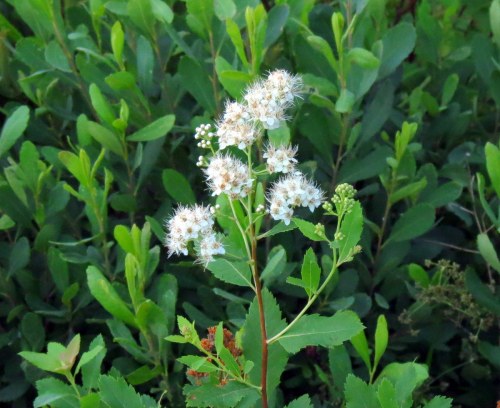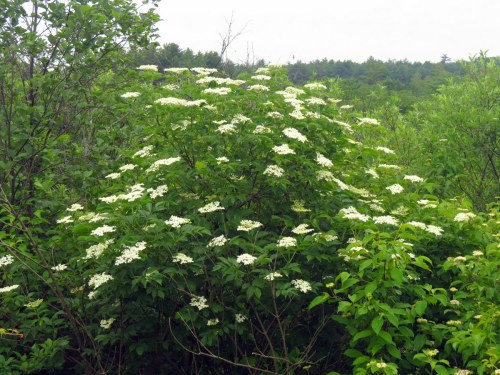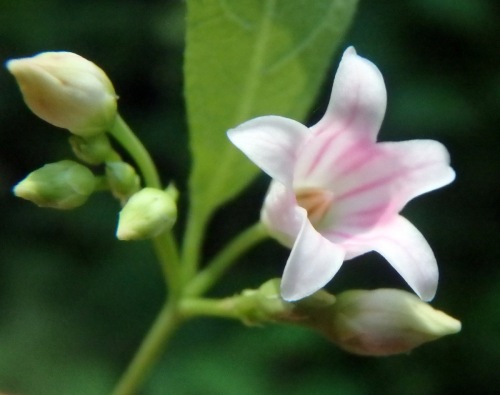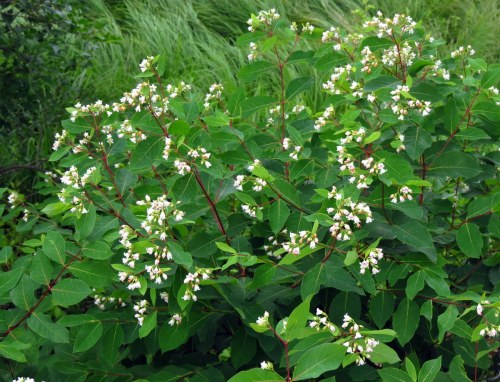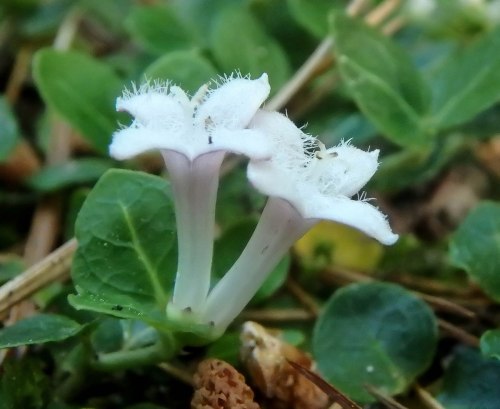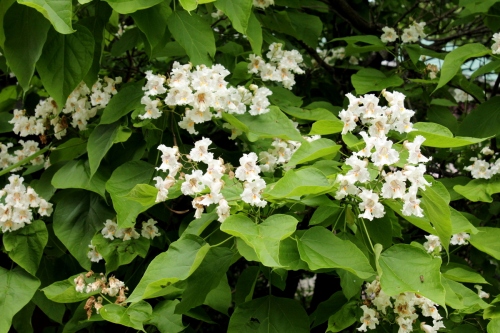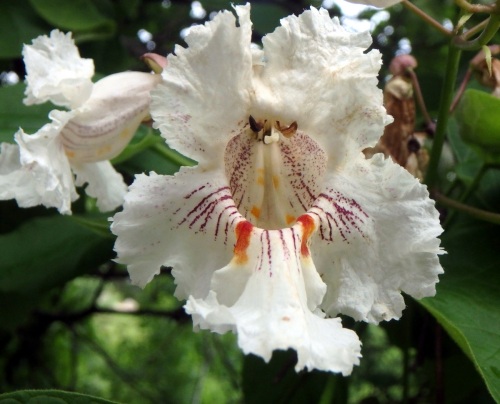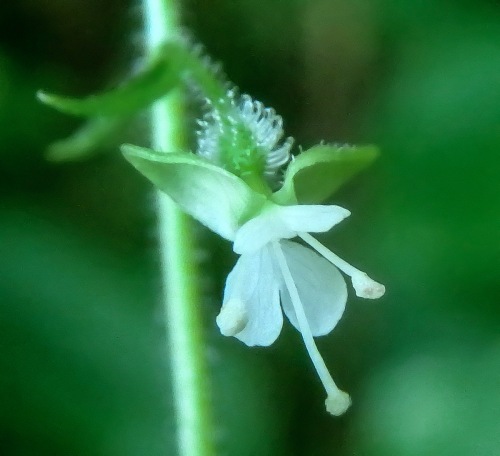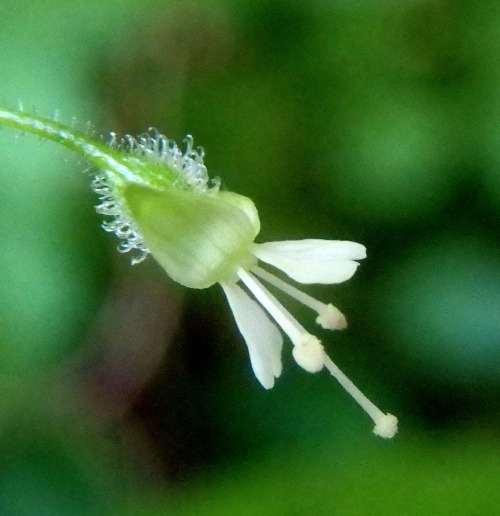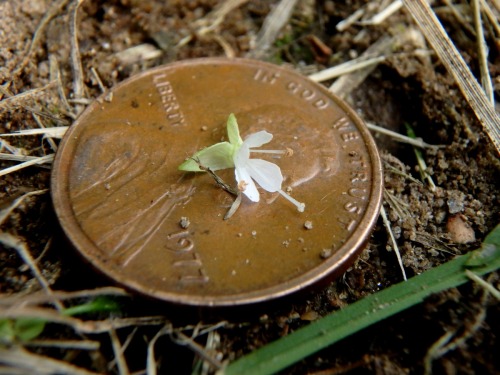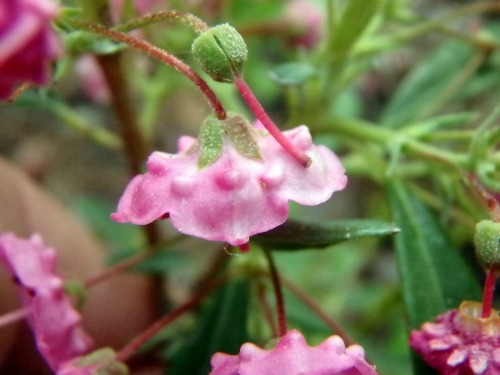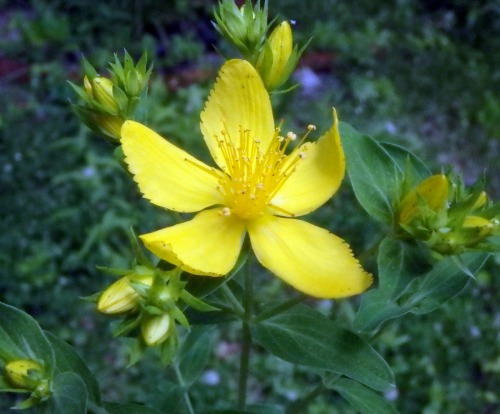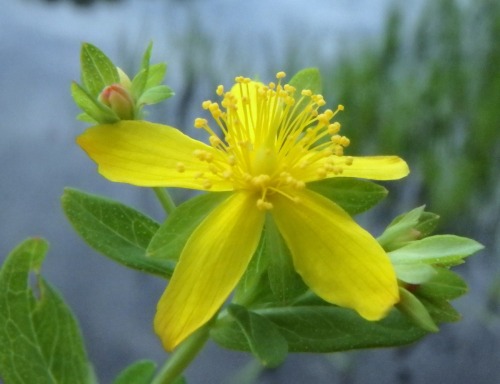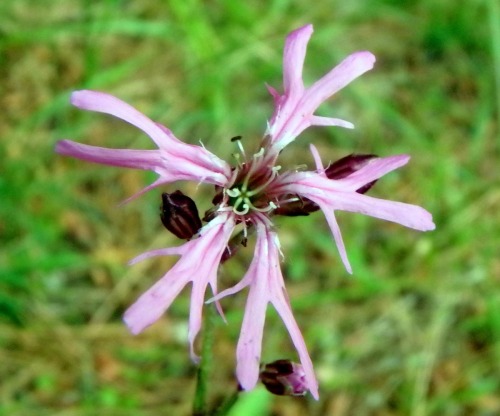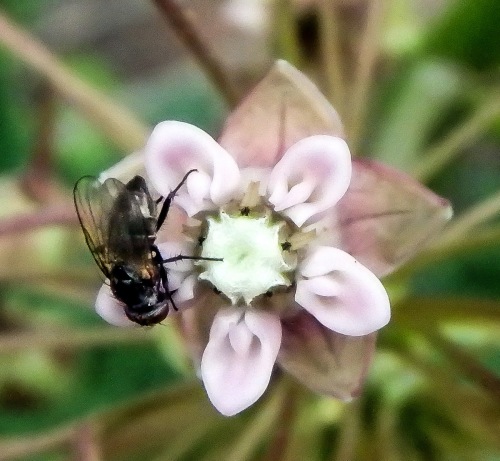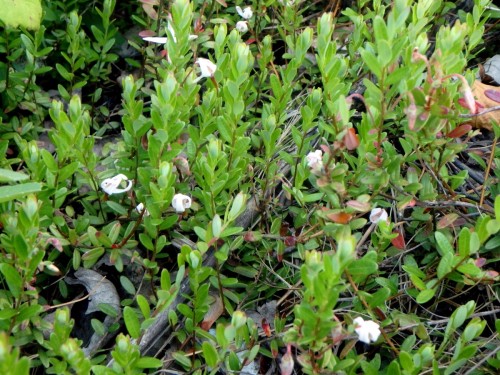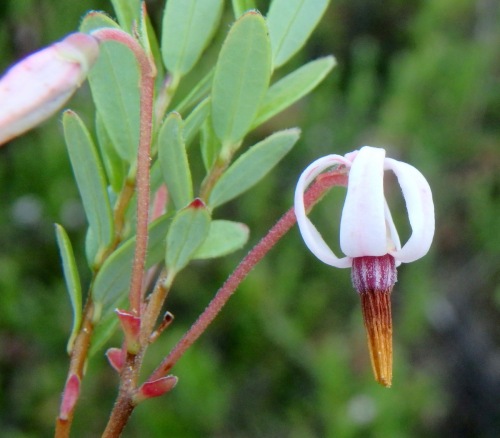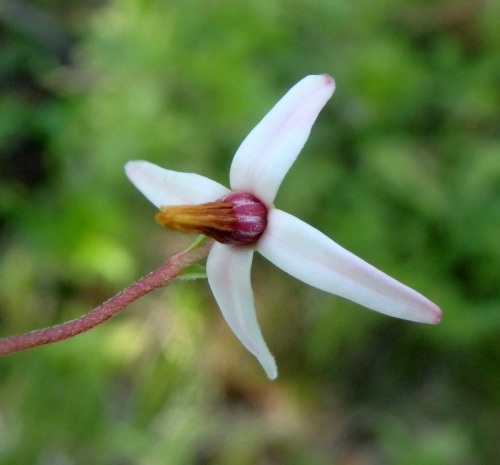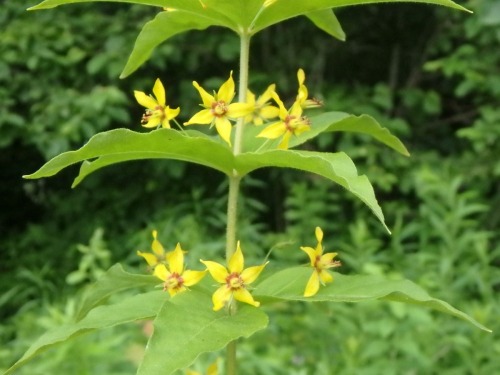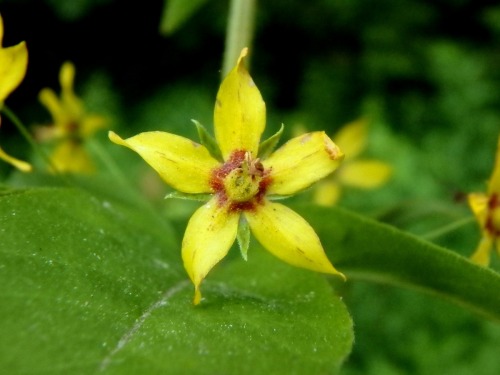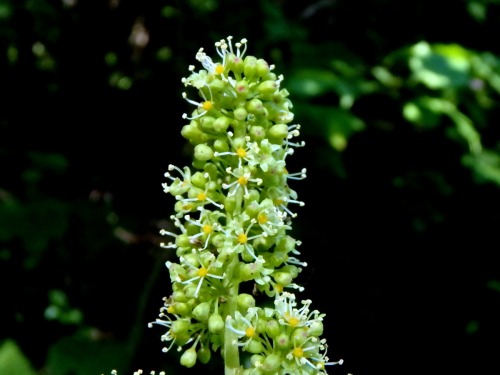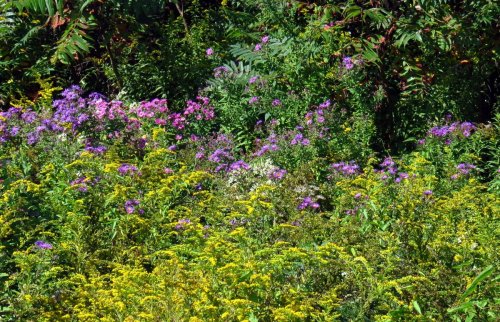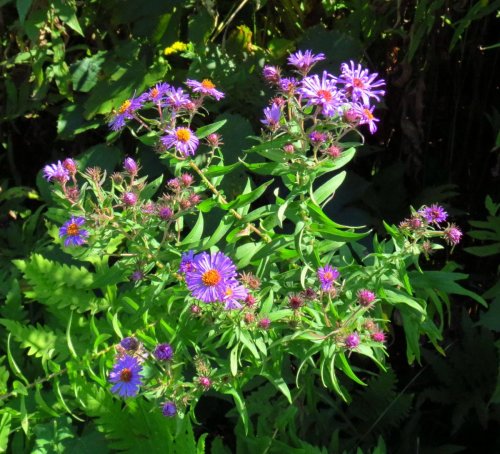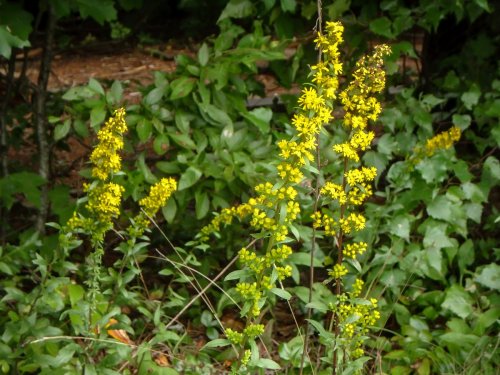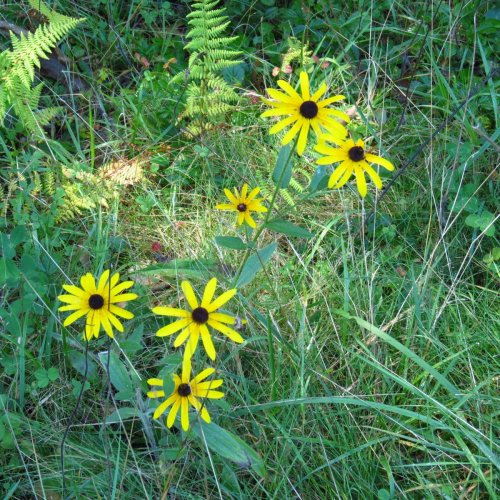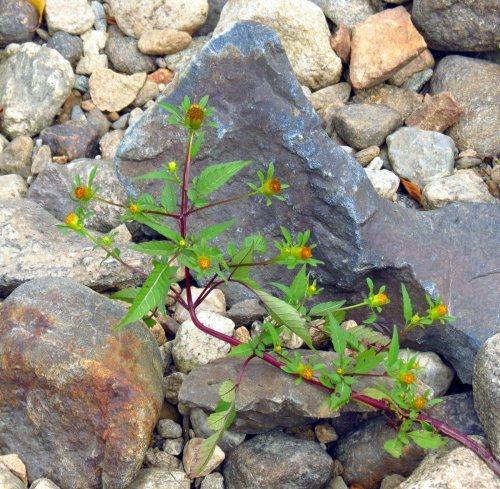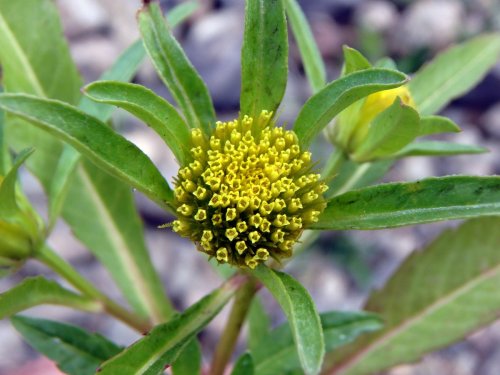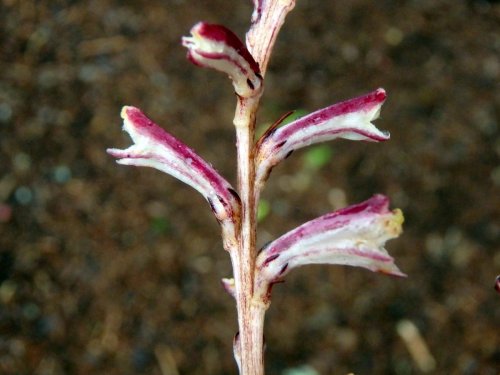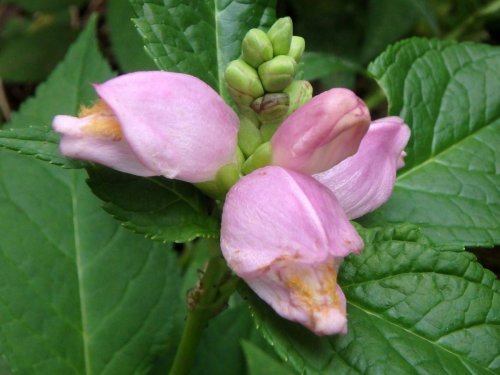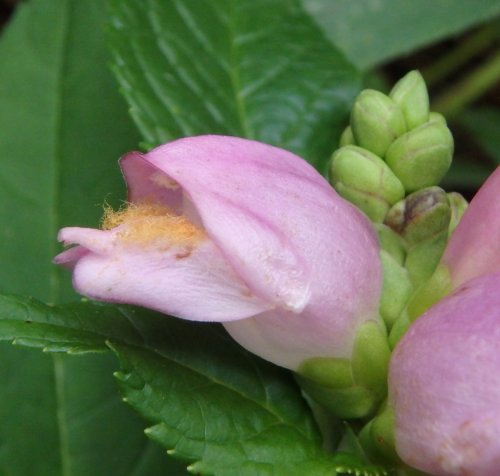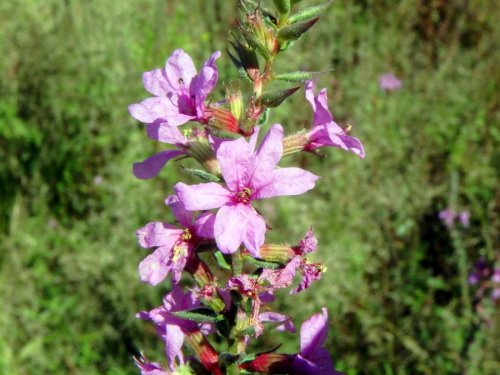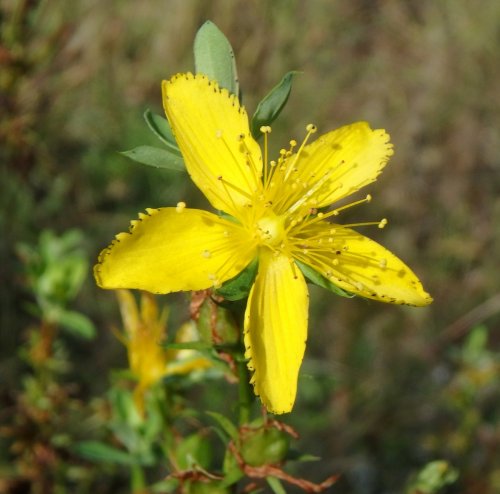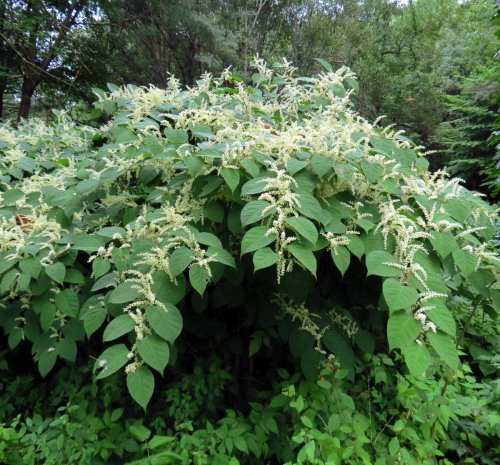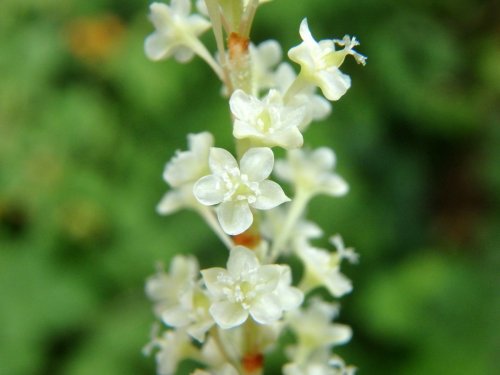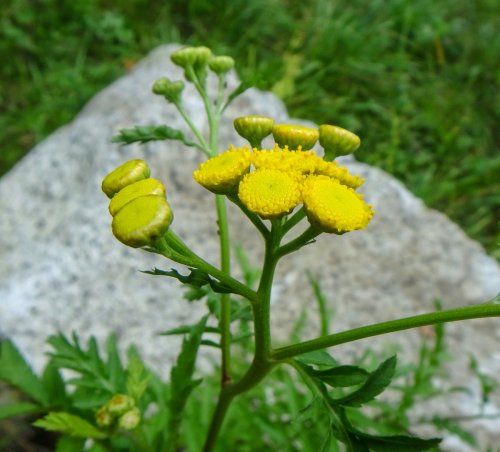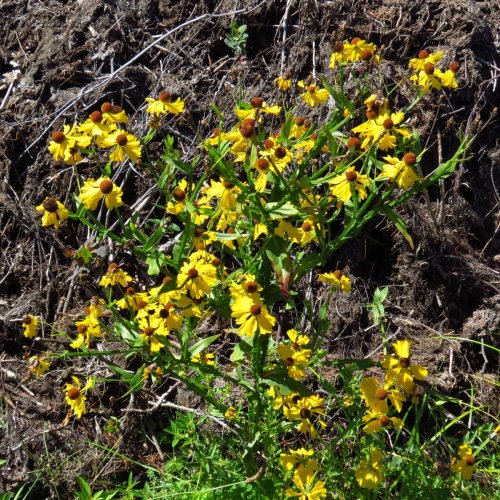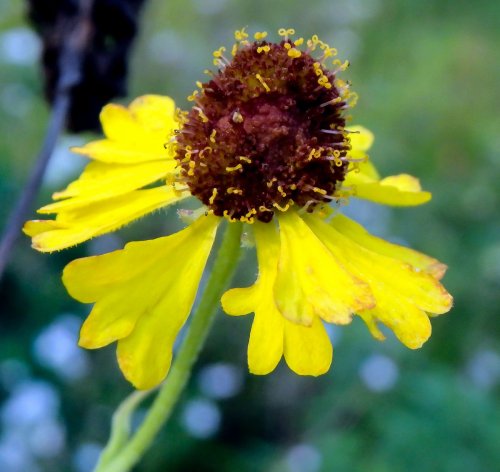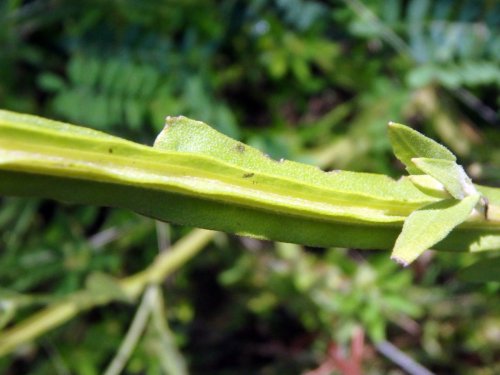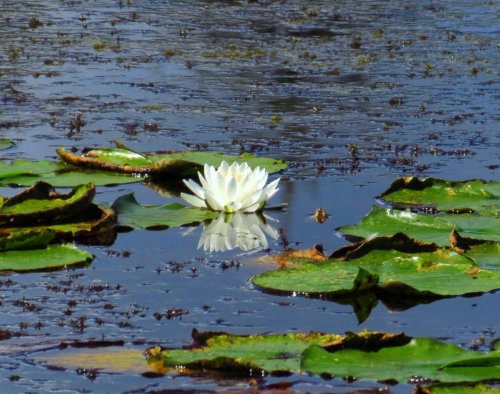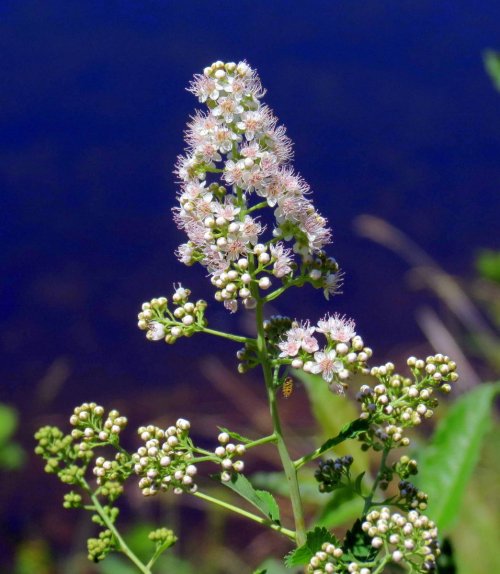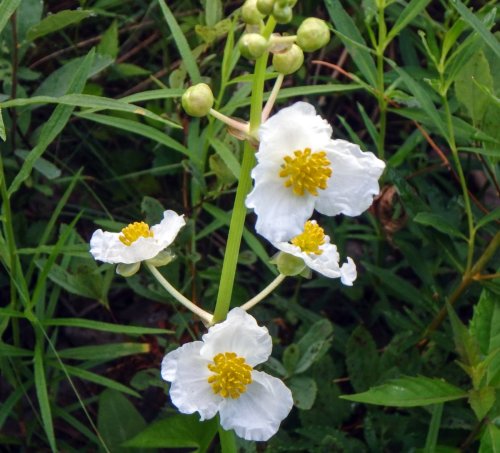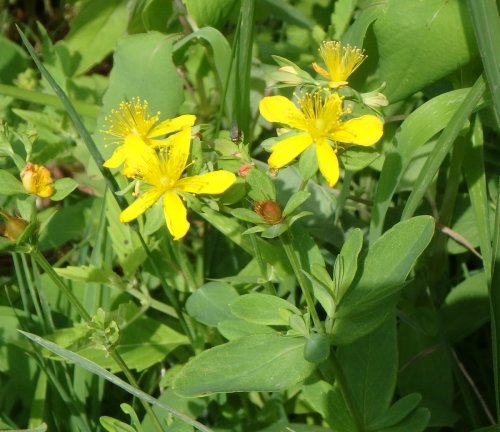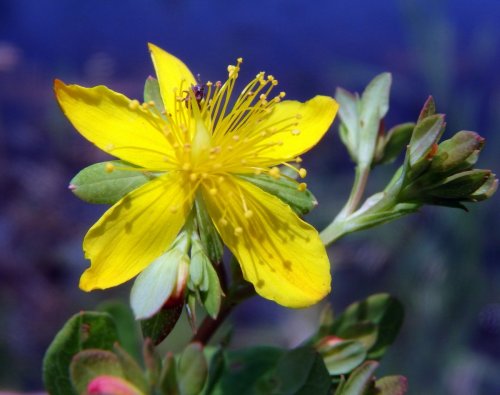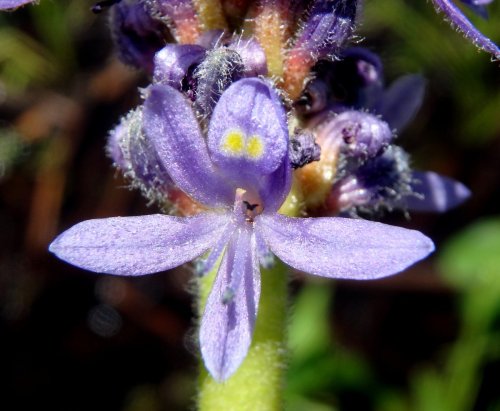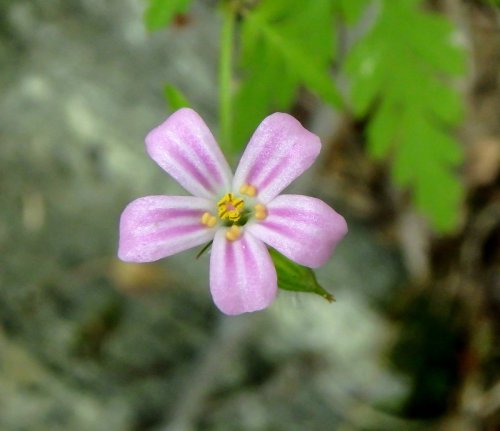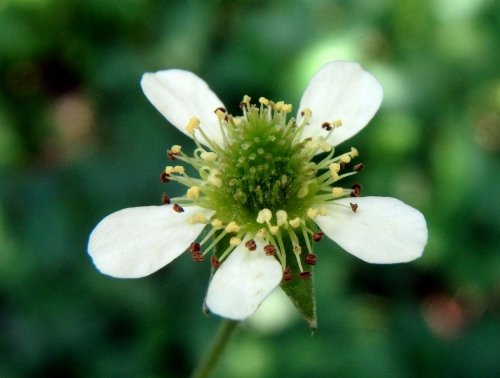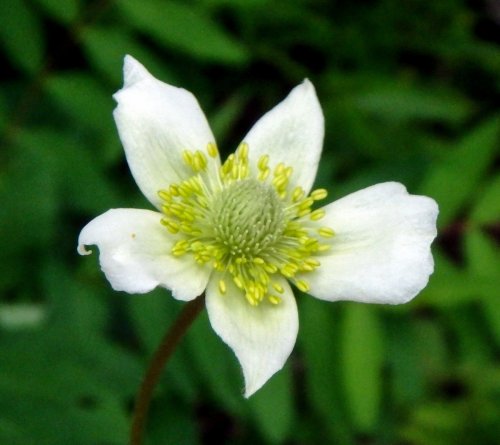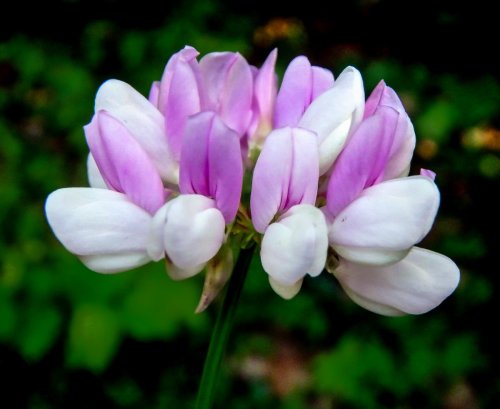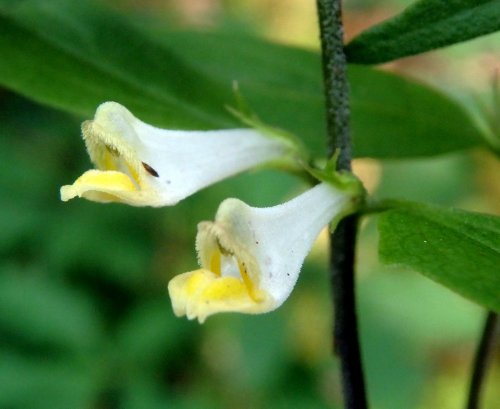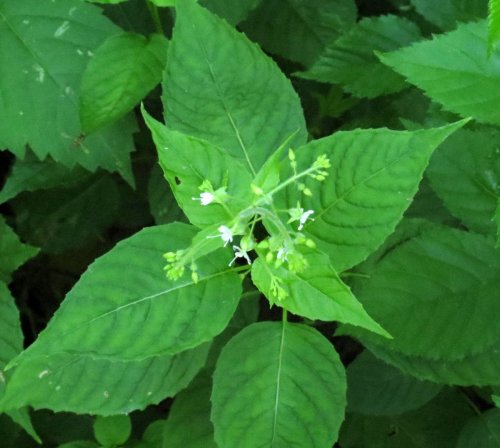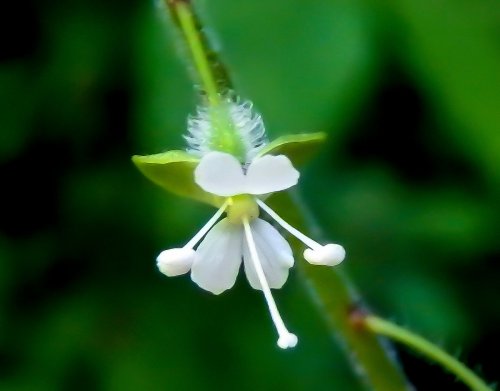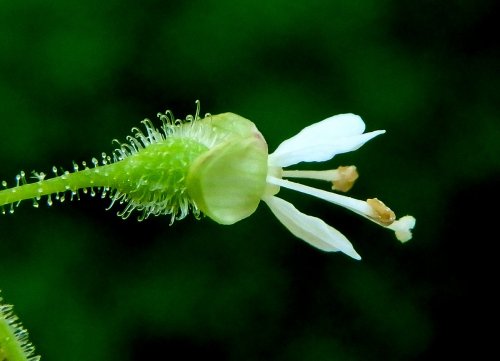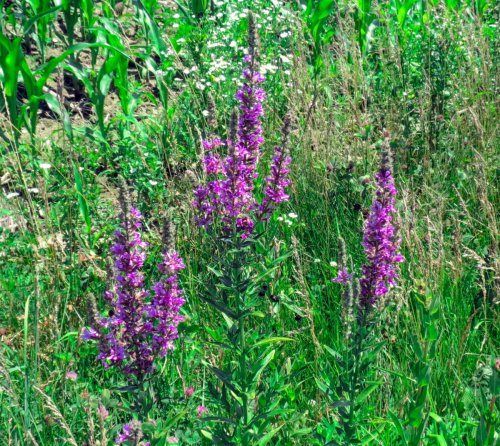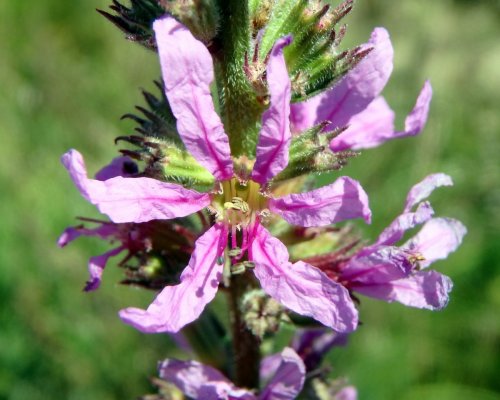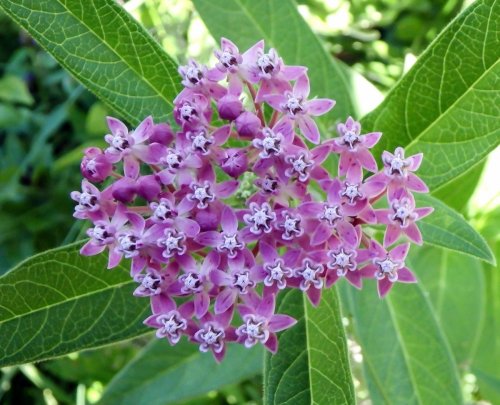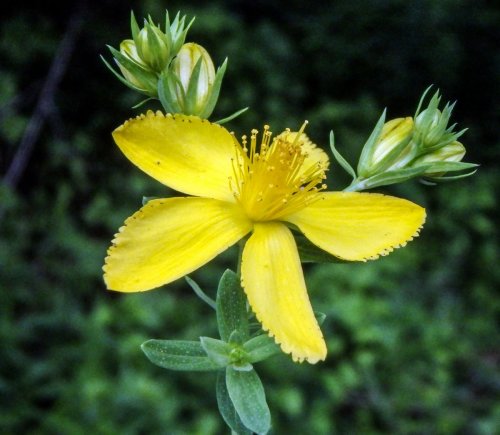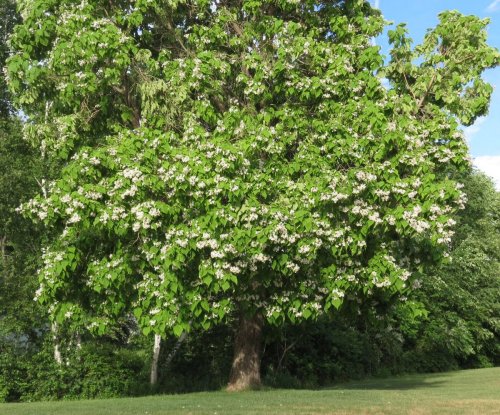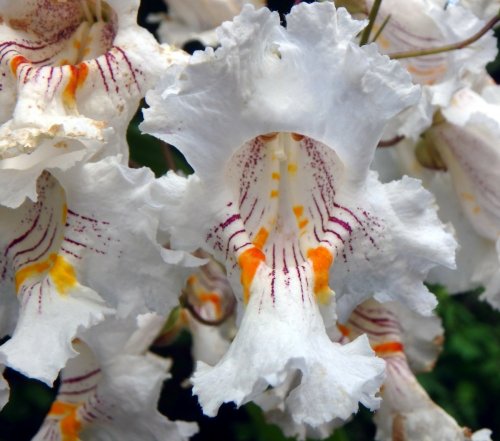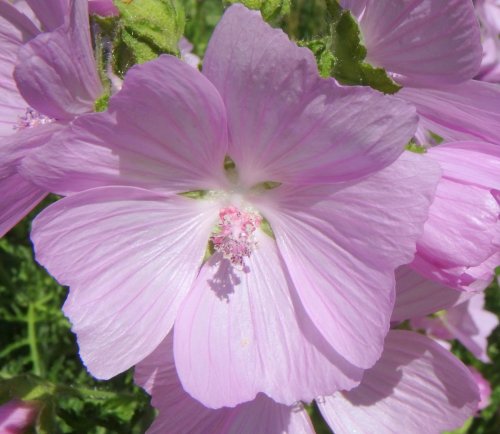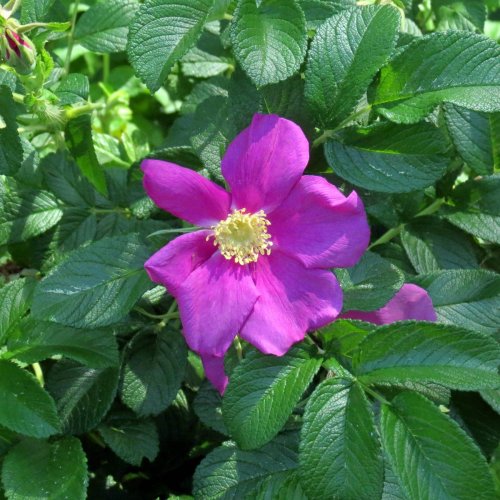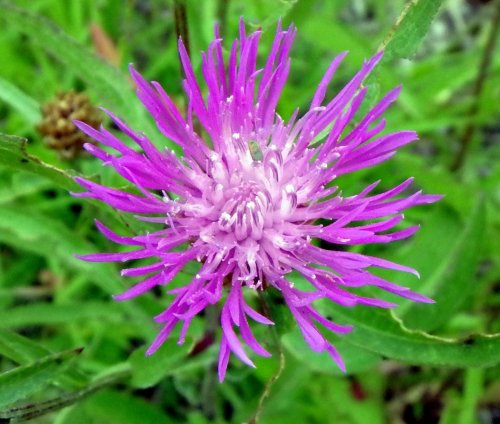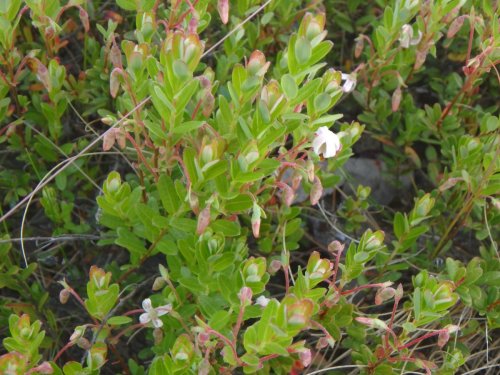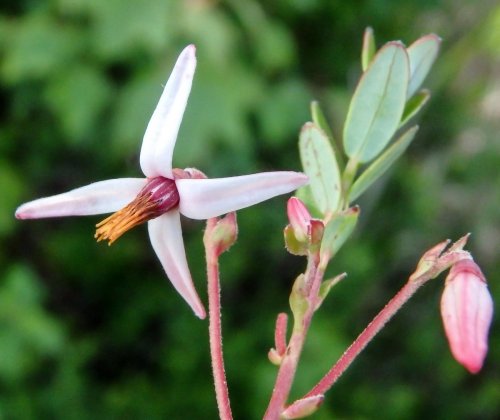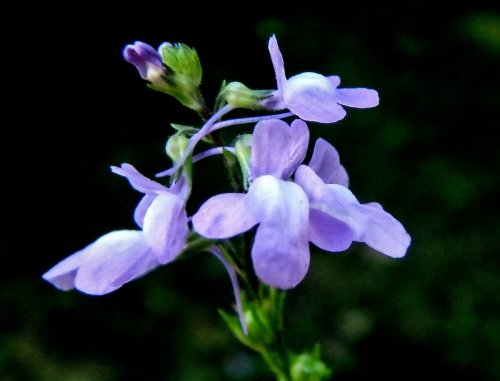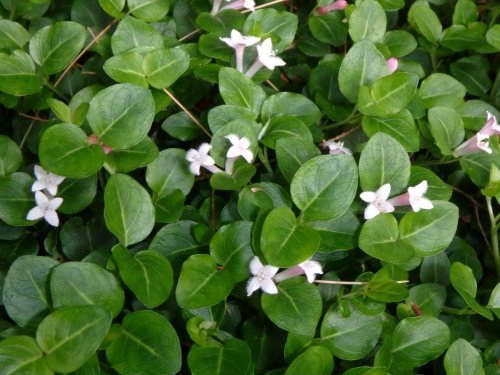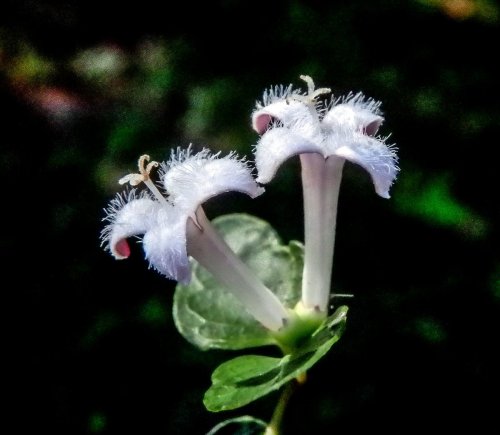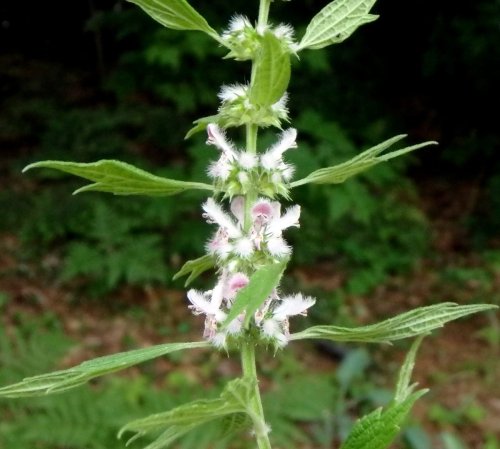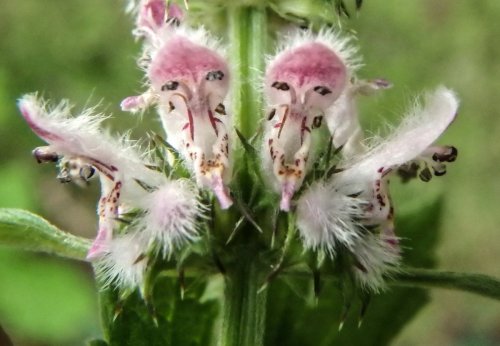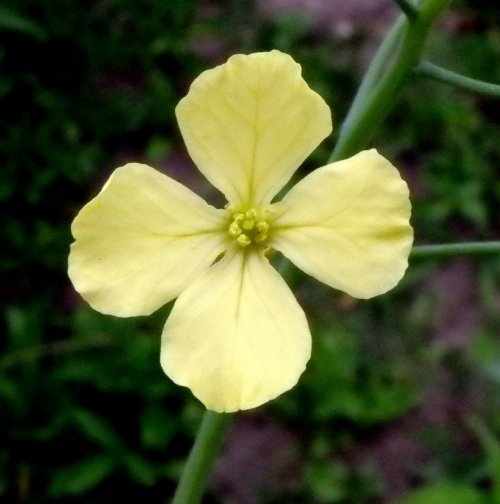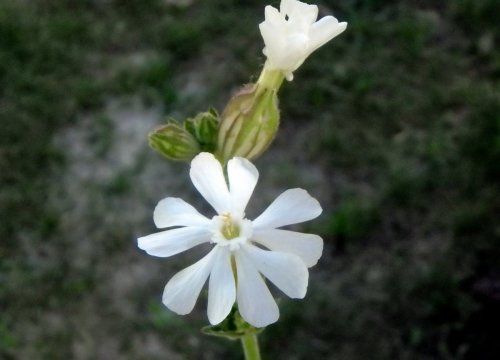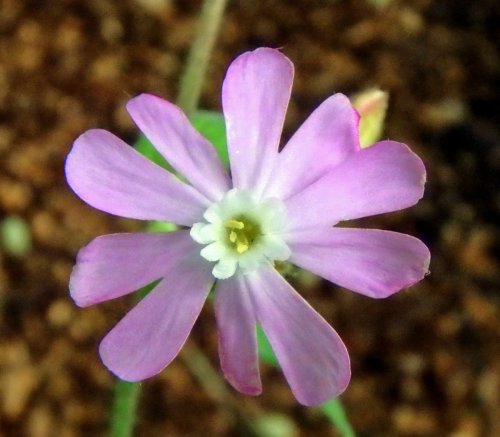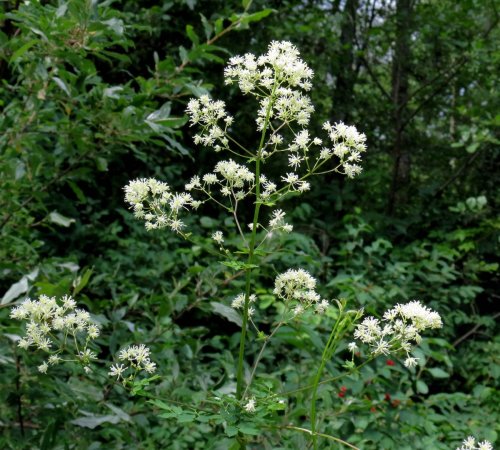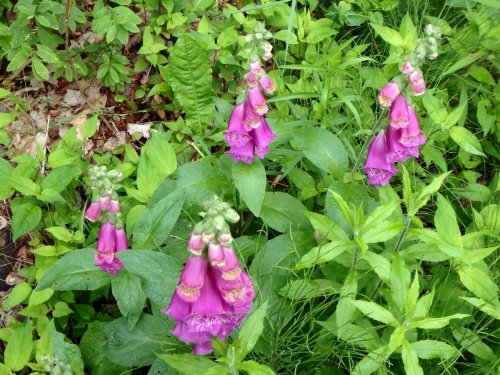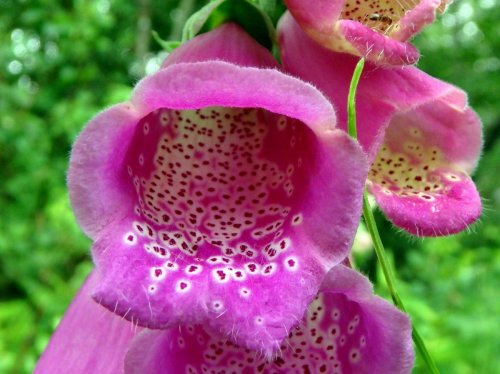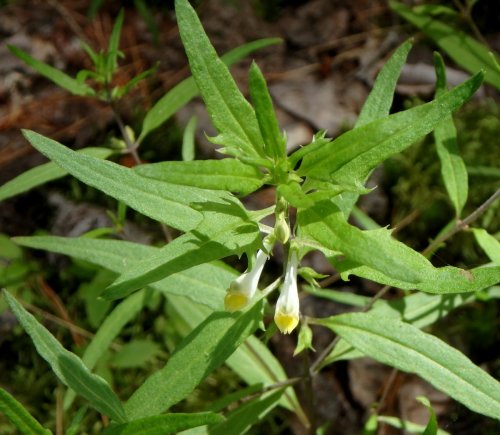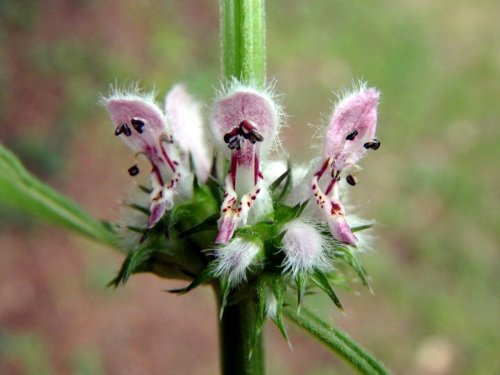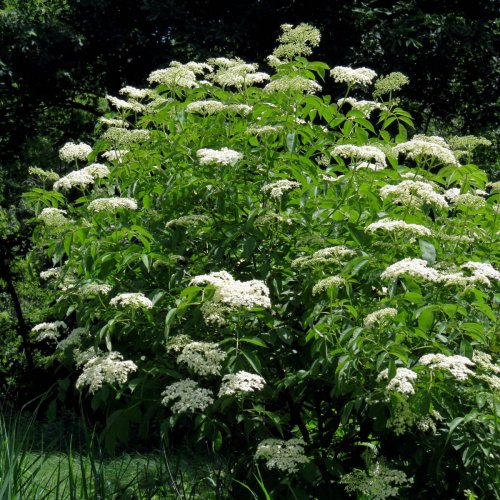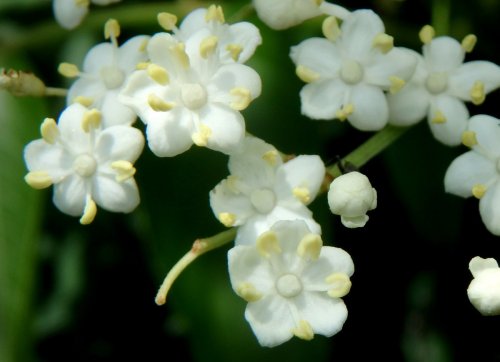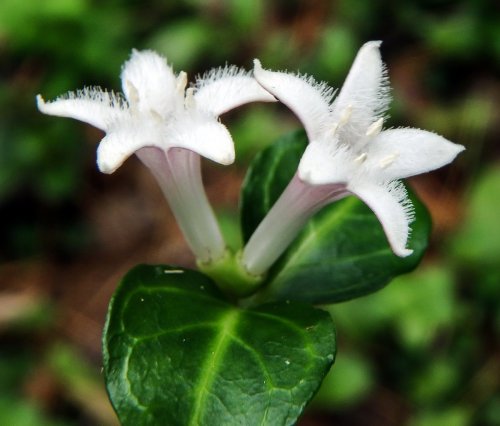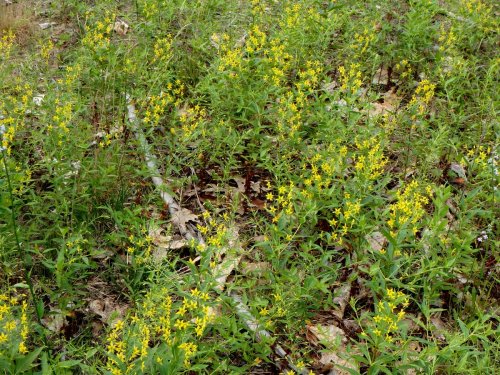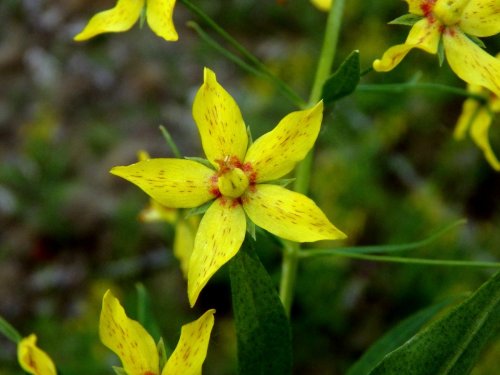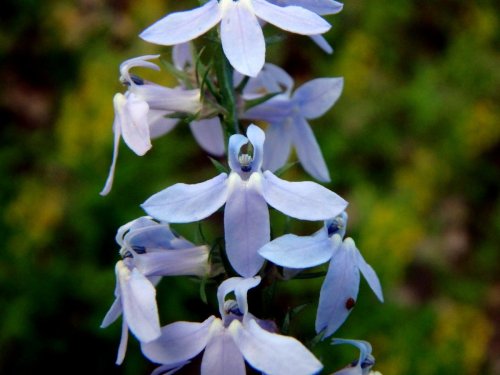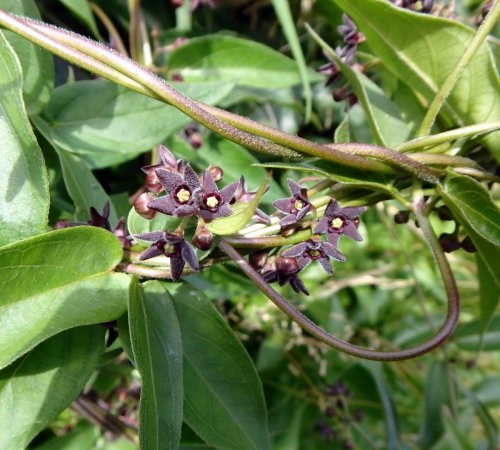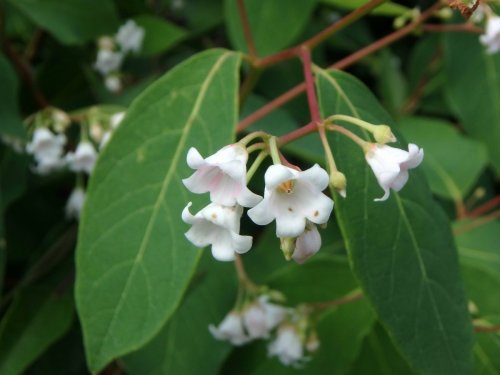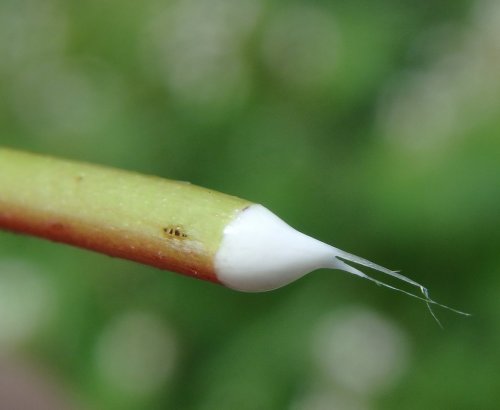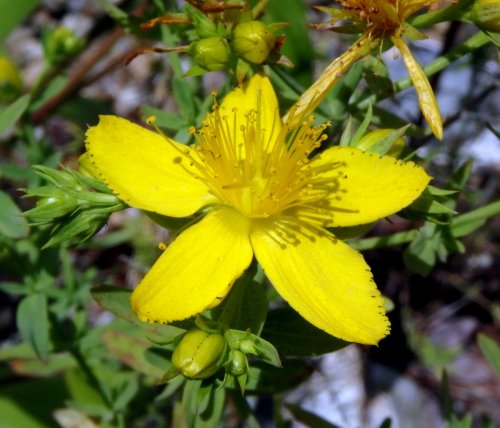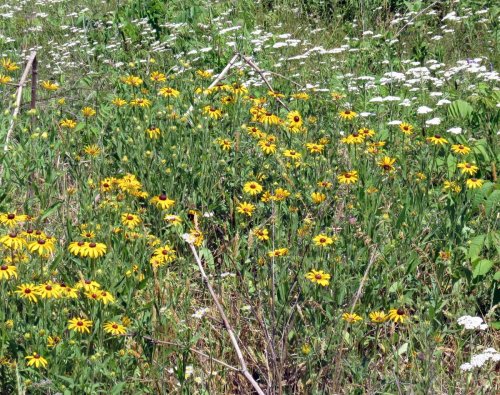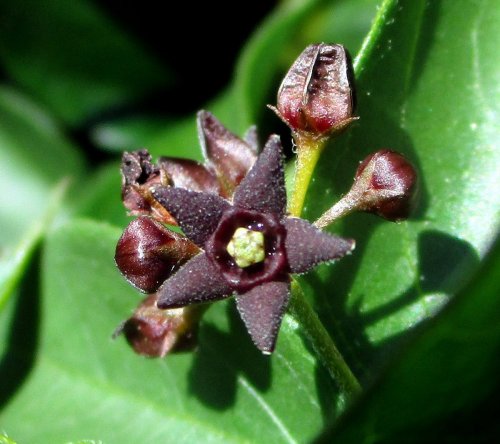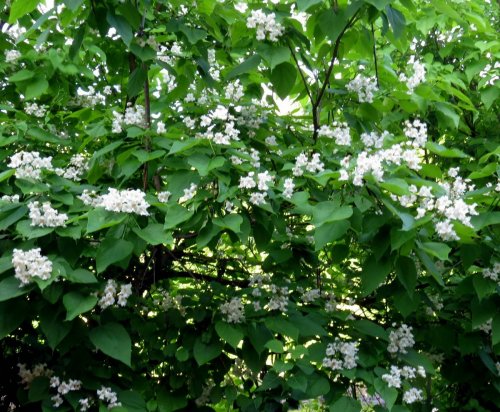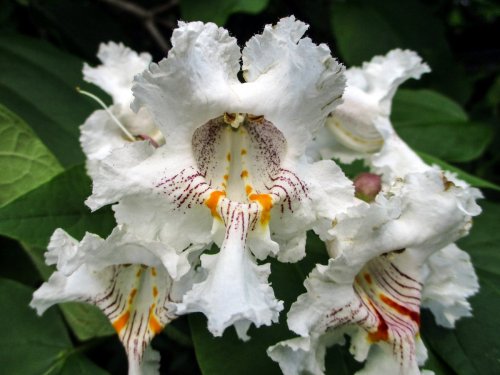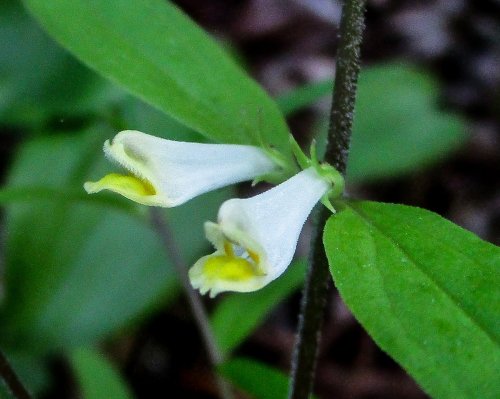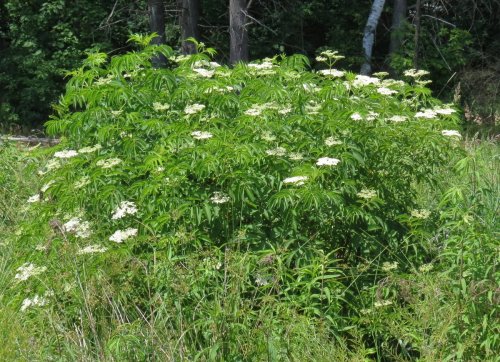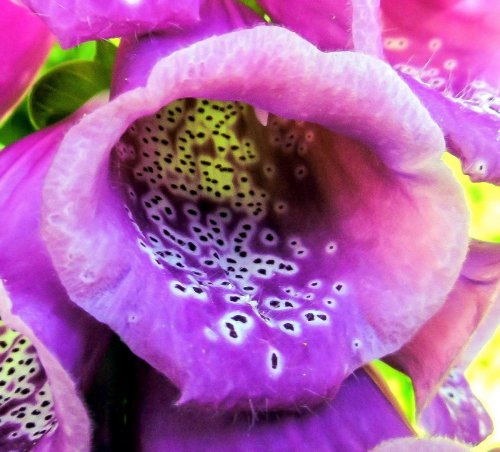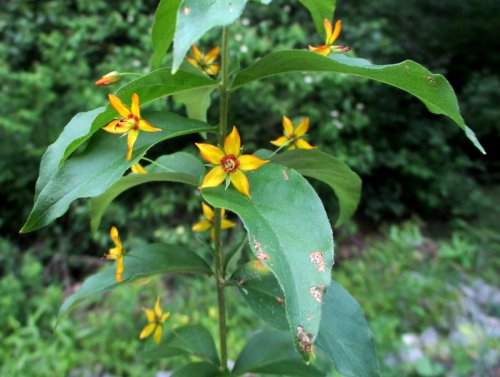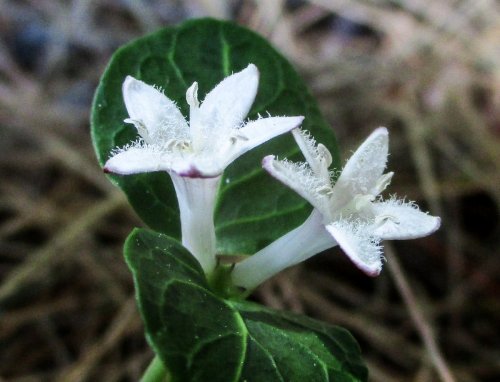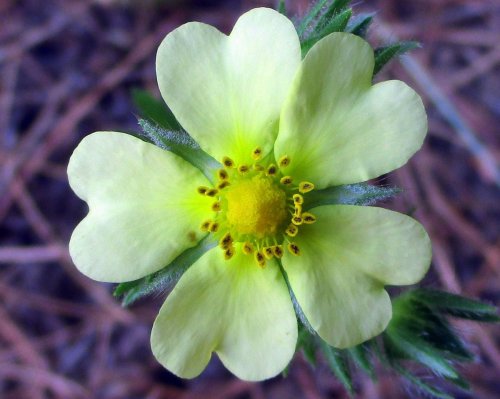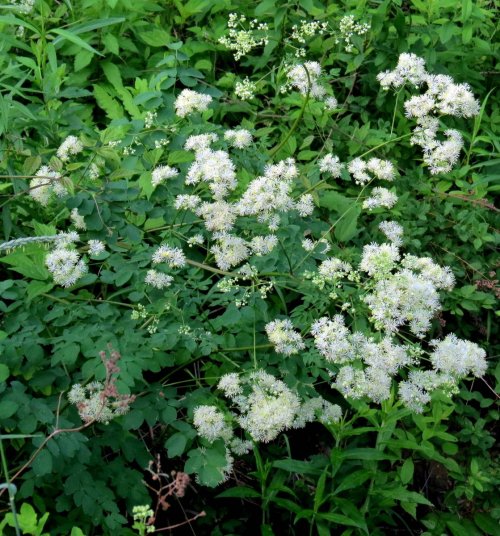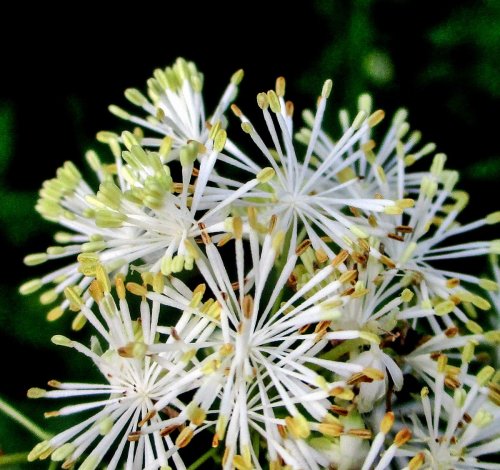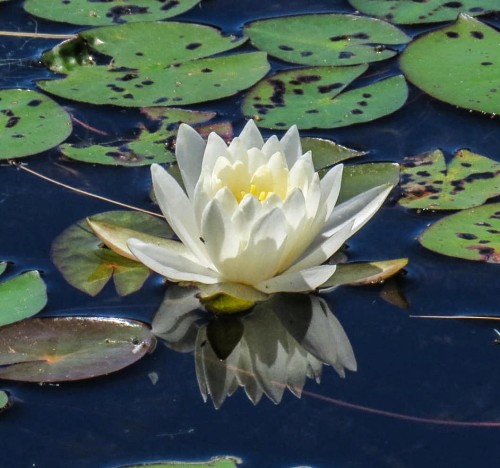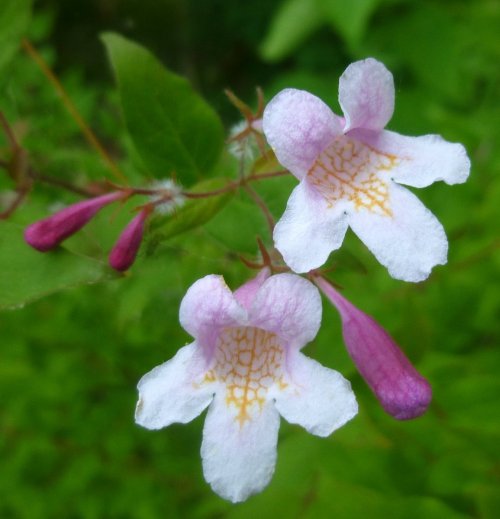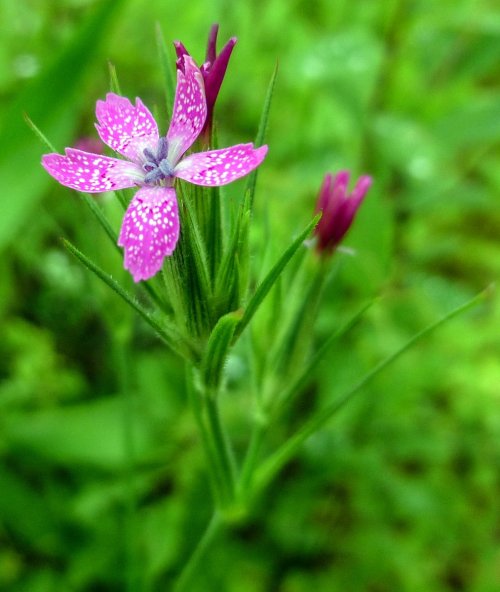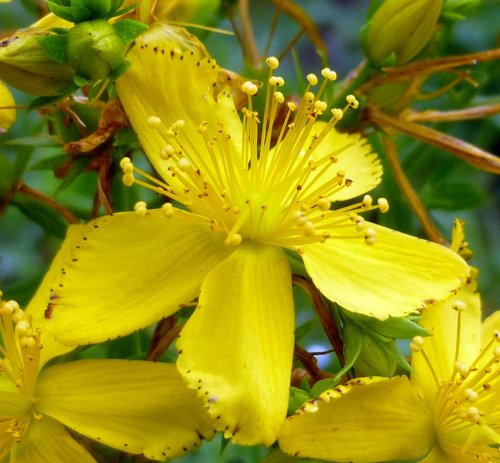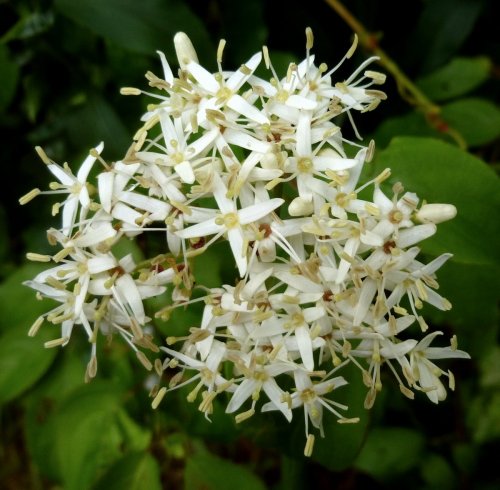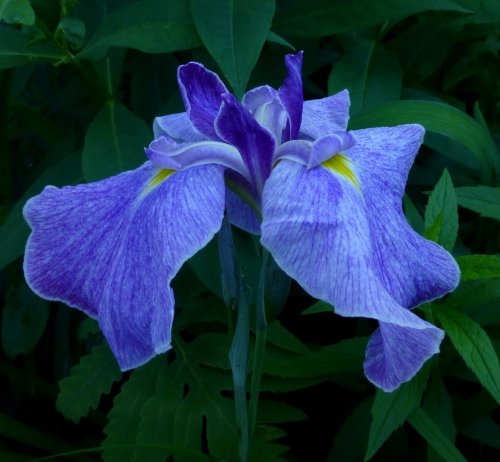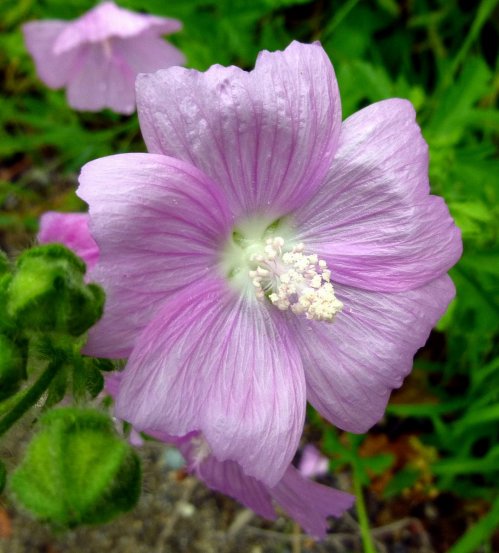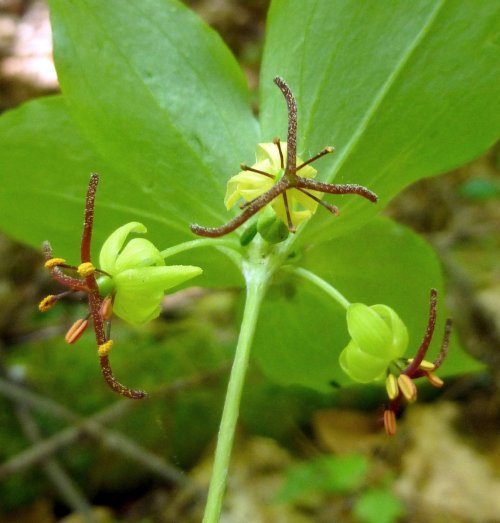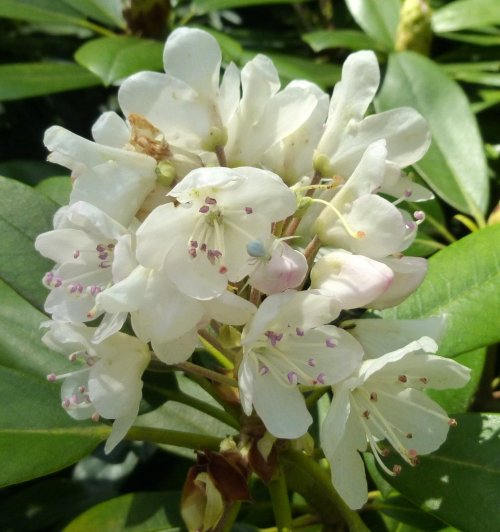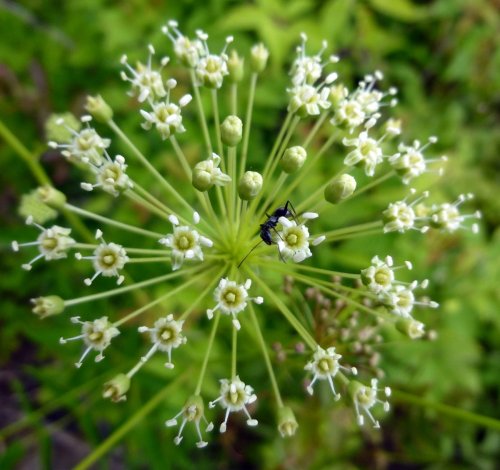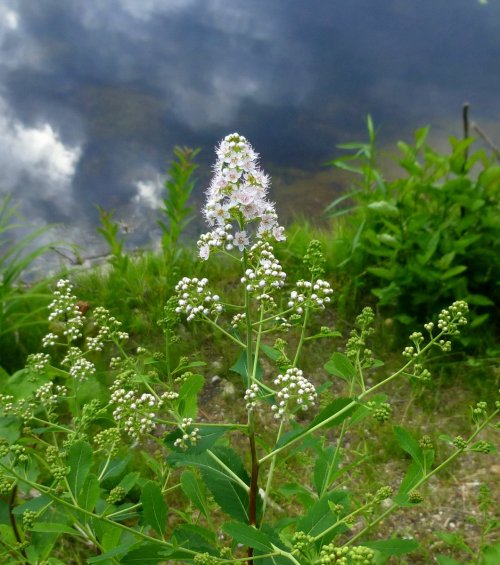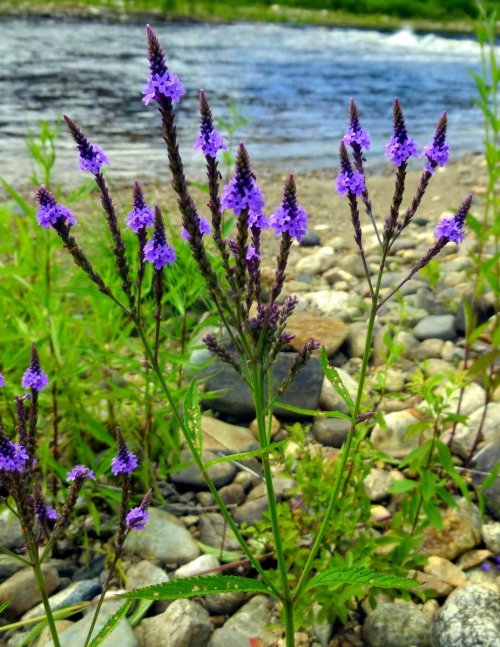Posts Tagged ‘St. Johnswort’
More Late June Flowers
Posted in Nature, Wildflowers, tagged Ashuelot River, Black Eyed Susan, Canon SX40 HS, Catalpa Flowers, Common Elderberry, Coreopsis, Cranberry Flowers, Crown Vetch, Foxglove, Golden Clover, Heal All, Hop Clover, Johnny Jump Ups, Keene, Native Plants, Nature, New Hampshire, NH, Olympus Stylus TG-870, Partridge Berry, Prunella, Spreading Dogbane, St. Johnswort, Summer Wildflowers, Swanzey New Hampshire, Tall Meadow Rue, White Meadowsweet on July 1, 2020| 6 Comments »
Late June / Early July Flowers
Posted in Nature, Wildflowers, tagged Bog Laurel, Canon EOS Rebel T6, Catalpa Flowers, Common Milkweed, Cow Wheat, Cranberry Flowers, Dwarf St. John’s Wort, Enchanter's Nightshade, Keene, Native Plants, Nature, New Hampshire, NH, Olympus Stylus TG-870, Ragged Robin, Sheep Laurel, St. Johnswort, Summer Flowers, Summer Wildflowers, Swanzey New Hampshire, Tall Meadow Rue, Whorled Loosestrife, Wild Grape Flowers on July 6, 2019| 24 Comments »
Like a tree full of orchids, that’s what the northern catalpa (Catalpa speciosa) looks like in full bloom. Of course the flowers are not orchids, but they’re very beautiful nevertheless. These big trees are blooming all over the area right now, about a week later than usual.
At 1-2 inches across catalpa flowers are large, and so are the heart shaped leaves. Each one is made up of petals that have fused to form one large, frilly petal. Yellow, orange and purple insect guides can be seen in the throat. The opening is quite big; easily big enough to put your finger in, with room to spare. These trees have long, bean like seed pods and when I was a boy we called them string bean trees. Luckily we were never foolish enough to eat any of the “beans” because they’re toxic. The word catalpa comes from the Native American Cherokee tribe. Other tribes called it Catawba.
From huge flowers to small flowers. I can’t call cow wheat blossoms tiny, but they are small. Narrow-leaf cow wheat (Melampyrum lineare) seems like a shy little thing but it is actually a thief that steals nutrients from surrounding plants. A plant that can photosynthesize and create its own food but is still a parasite on surrounding plants is known as a hemiparasite.
Cow wheat’s long white, tubular flowers tipped with yellow-green are very small, and usually form in pairs where the leaves meet the stem (axils) but this year I’m seeing more single blooms than pairs. I find this plant growing in old, undisturbed forests. It is quite common, but so small that few seem to notice it. The flowers bloom at about shoe top height. I thought I’d put one on a penny so you could see how small they really are.
Cow wheat blossoms seem big compared to the tiny blossoms of enchanter’s nightshade (Circaea lutetiana canadensis.) This woodland plant is a shade lover and I notice it along trails only when it blooms in July. It gets its scientific name Circaea from Circe, an enchantress in Homer’s Odyssey with a fondness for turning men into swine. There are similar plants native to Europe and Asia.
Each tiny 1/8 inch wide enchanter’s nightshade flower consists of 2 white petals that are split deeply enough to look like 4, 2 green sepals, 2 stamens, and a tiny central style. At the base of each flower there is a 2 celled ovary that is green and covered with stiff hooked hairs, and this becomes the plant’s bur like seed pod, which sticks to just about anything. When a plant’s seed pods have evolved to be spread about by sticking to the feathers and fur of birds and animals the process is called epizoochory. The burs on burdock plants are probably the best known examples of epizoochory.
Here is a tiny enchanter’s nightshade blossom on a penny. They’re among the smallest flowers that I try to photograph for this blog.
Last year when I showed what I thought was bog laurel (Kalmia polifolia) a helper wrote in and asked if it could be sheep laurel (Kalmia angustifolia) instead. Since I found the plant growing in standing water and since the flower clusters were terminal, appearing at the ends of the branches, I didn’t think so. But now I’m not so sure because sheep laurel also has terminal flower clusters and the new leaves come out below the flower clusters and grow up around them, and that’s exactly what this plant does. But names of things are becoming less and less important to me as I get older and I can live with knowing it’s one or the other. I hope you can too.
One thing I know for sure is that it is a laurel and you can tell that by the ten pockets in each flower, where the anthers reside under tension. When a heavy enough insect lands on the flower the spring loaded anthers release from their pockets and dust it with pollen.
St. John’s wort (Hypericum perforatum) gets its common name from the way that it flowers near June 24th, which is St. Johns day, but it has been well known since ancient times. The Roman military doctor Proscurides used it to treat patients as early as the 1st century AD, and it was used by the ancient Greeks before that. The black dots on its yellow petals make this flower very easy to identify. Originally from Europe, it can be found in meadows and along roadside growing in full sun.
Dwarf St. John’s wort (Hypericum mutilum) is a small, bushy plant that gets about ankle high and has flowers that resemble those found on its larger cousin, St. John’s wort. A noticeable difference, apart from their small size, is how the flowers lack the brown spots often found on the petals of the larger version. These flowers are about the same diameter as a pencil eraser and, since the plants often grow right at the water’s edge, you usually have to get wet knees to get a good photo of them.
Beautiful ragged robin (Lychnis flos-cuculi) started blooming about a week ago. This is a plant that I’ve searched for many years for and could never find until I finally found some growing in an unmown lawn, and now I know of two places it grows in. It is said to prefer disturbed habitats like meadows and fields and I guess the fact that it grew in a lawn proves it. Though there are native plants called ragged robin in the U.S. this particular plant was introduced from Europe into New England.
Common milkweed (Asclepias syriaca) flowers are notorious for catching onto the legs of insects and not letting go so I thought that’s what had happened to this fly, especially since it let me take shot after shot without flying off, but I finally poked it with my finger and away it went. Apparently it was simply too involved with what it was doing to pay me any mind.
Cranberries are one of the native fruits that grow abundantly here in the northeast. I usually find them in wet, boggy areas but they will grow in drier areas near water. We have two kinds here, the common cranberry (Vaccinium oxycoccos) and the small cranberry (Vaccinium microcarpum.) I think the plants pictured are the common cranberry.
Early European settlers thought cranberry flowers resembled the neck, head, and bill of a crane so they called them crane berries and that has evolved into what we call them today. The flower petals do have an unusual habit of curving backwards, but I’m not seeing cranes when I look at them. Cranberries were an important ingredient of Native American pemmican, which was made of dried meat, berries, and fat. Pemmican saved the life of many an early settler.
Sometimes if you’re lucky you can catch a cranberry blossom before its petals have recurved, but on this day I only saw one or two out of many hundreds.
Our native whorled loosestrife (Lysimachia quadrifolia) has just started blooming in the tall grass along roadsides. This plant’s leaves and flowers grow in a whorl around the stem. A whorl, in botanical terms for those who don’t know, is made up of at least three elements of a plant (leaves, flowers, etc.) that radiate from a single point and surround the stem. In this case both the leaves and flowers grow in a whorl, because where each leaf meets the stem a five petaled, star shaped yellow flower appears at the end of a long stalk. The leaves in each whorl can number from 3 to 7. According to Pliny the young leaves of whorled loosestrife will stop bleeding when they are tied to a wound.
Each yellow petal of the 1/2 inch flowers are red at the base and form a ring around the central red tipped yellow stamens. The petals also often have red streaks as those in the photo do. Whorled loosestrife is the only yellow loosestrife that has pitted leaves and long-stalked flowers in the leaf axils. It grows in dry soil at the edge of forests.
It’s hard to believe that something as tiny as a river grape blossom (Vitis riparia) could be fragrant but in places right now you can follow your nose right to the vines, so strong is the fragrance. And this isn’t the end of the joy they bring; in the fall the fermented fruit on a warm day will make the woods smell just like grape jelly.
I don’t see tall meadow rue (Thalictrum pubescens) in meadows unless the meadow is wet. I usually find it at the edge of streams or in ditches as the example in the above photo was. Meadow rue can grow 7-8 feet tall so getting above it can be next to impossible. Native Americans are said to have given lethargic horses ground meadow rue leaves and flowers to increase their vigor and to renew their spirit and endurance.
It wouldn’t be the fourth of July without fireworks and every year, right on time, tall meadow rue blossoms with fireworks of its own. At least the male flowers do, with starbursts of petal-less dark yellow tipped stamens. Knowing when flowers bloom is a fun thing; they give you something beautiful to look forward to all summer long.
None can have a healthy love for flowers unless he loves the wild ones. ~Forbes Watson
Thanks for stopping in.
Mid September Flowers
Posted in Nature, Wildflowers, tagged Ashuelot River, Beech Drops, Black Eyed Susan, Downy Goldenrod, Fragrant White Water Lily, Japanese Knotweed, Keene, Late Summer Flowers, Native Plants, Nature, New England Asters, New Hampshire, NH, Olympus Stylus TG-870, Pink Turtlehead, Purple Loosestrife, Purple Stemmed Beggar Ticks, Sneezeweed, St. Johnswort, Summer Wildflowers, Swanzey New Hampshire, Tansy on September 19, 2018| 25 Comments »
Here is a roadside scene that is typical in this area at this time of year. There are dark and light purple New England asters, white asters which I haven’t identified, and of course plenty of yellow goldenrod.
New England asters (Symphyotrichum novae-angliae) are everywhere now and as I’ve said in previous posts, they are our biggest, most showy aster. Some tower up over my head.
A goldenrod that I see a lot of is downy goldenrod (Solidago puberula.) The leaves have a downy coating and that’s where its common name comes from. They reach about a foot and a half tall on a good day, but some books say they will reach 3 feet. The narrow, stalked flower heads (panicles) grow on plants that live at the edges of forests in dry sandy soil, often in colonies of 15-20 plants. The bright yellow 1/4 inch flowers of downy goldenrod seem big when compared to other goldenrod flowers. Native Americans used goldenrod for treating colds and toothaches and it has been used for centuries in to treat kidney stones and urinary tract infections. In colonial times goldenrod growing naturally by the cottage door meant good fortune.
Black eyed Susans (Rudbeckia hirta) are another flower with a long bloom time but they’re getting sparse now and you have to search to find them in this area. Though they start blooming in June I always think of them as a fall flower, so when I see them in June I always have to ask them do you have to remind me so soon? Summer just started! I forgive them for trying to make time pass so quickly though because they’re so cheery, even in June.
I wanted to show purple stemmed beggar’s Ticks (Bidens connata) again because the last time I showed it here you couldn’t see the purple stem. This is a plant that teaches patience because it suddenly appears in late July and grows for several weeks before it flowers. There are nearly 200 species in the genus and many of them look nearly identical. In this part of the state this plant grows side by side with the nodding burr marigold (Bidens Cernua,) which is also called smooth beggar’s ticks and looks very similar. The plant gets its common name from the way its barbed seeds cling to clothing. Books say that it reaches 3 1/2 feet tall but I’ve seen some get close to six feet. The one in the photo is more typical of its often sprawling habit. I’ve also seen these plants growing in water at the edge of ponds.
Here is a purple stemmed beggar’s tick blossom fully opened. I think.
Beech drops (Epifagus americana) grow in deep shade and can be hard to photograph. This isn’t a good shot but it does show the plant’s growth habit and lack of leaves, which is what I’d like you to see. Beech drops grow near beech trees and are a parasite that fasten onto the roots of the tree using root like structures. They take all of their nutrients from the tree so they don’t need leaves, chlorophyll or sunlight. Beech drops are annuals that die off in cold weather, but they can often be found growing in the same place each year.
Tiny pinkish purple flowers with a darker purplish or reddish stripe are the only things found on a beech drop’s leafless stems. On the lower part of the stem are flowers that never have to open because they self-fertilize. They are known as cleistogamous flowers. On the upper part of the stem are tubular chasmogamous flowers, which open and are pollinated by insects and are shown in the above photo. Though the flowers have reproductive parts science doesn’t know much about which insects pollinate this plant.
The pink turtleheads (Chelone lyonii) are blooming in my garden; one of the very last plants to do so. A friend gave me this plant many years ago and I think of her every time I see it bloom. That’s one of the best things about giving and receiving plants; they come with memories. I don’t know the origin of this plant and have never known if it was a native or a cultivar but it does very well and asks for nothing. Pink turtleheads are native to the southeastern U.S. and don’t seem to mind dryness in spite of naturally growing near water.
It’s very hairy inside a turtlehead blossom. The hairs remind me of the beard on a bearded iris.
Most purple loosestrife (Lythrum salicaria) plants pretty much stopped blooming a couple of weeks ago but I still see them blooming here and there. This is an invasive perennial that came over from Europe in the ballast of a cargo ship in the 1800s. The beach sand ballast, loaded with purple loosestrife seeds, was originally dumped on Long Island, New York. The seeds grew, the plant spread and now it covers most of Canada and all but 5 of the lower Untied States. It likes wet, sunny meadows but will grow just about anywhere. It’s hard to deny its beauty, especially when you see a meadow full of it growing alongside yellow goldenrods, but the plant chokes out natives including goldenrod and creates monocultures.
I don’t know if it’s the unusual hot temperatures we’ve had or if there is another reason but I’m seeing a lot of summer flowers that I shouldn’t be seeing now, like this St. Johnswort (Hypericum perforatum.) It usually blooms in June and July and should be long since done by now but I guess it can do whatever it wants. In any event it’s a pretty thing and I was happy to see it. Originally from Europe, St. Johnswort has been used medicinally for thousands of years. It likes to grow in open meadows in full sun.
Japanese knotweed (Fallopia japonica) still blooms here and there but it’s pretty well finished for this year. Its final act will be to drop millions of seeds before it dies back completely until spring. This plant was brought to Europe from Japan sometime around 1829. It was taken to Holland and grown in nurseries that sold it as an ornamental. From there it found its way across the Atlantic where we still do battle with it today. It is one of the most invasive plants known and the only plant I have ever seen overtake it is purple loosestrife, which is also an invasive weed. Japanese knotweed is also a tough plant that is very hard to eradicate once it has become established.
Japanese knotweed does have pretty flowers but they aren’t enough to convince people that it’s a plant worth having on their property. It can take over entire yards when left alone.
I can count the number of times I’ve found Tansy (Tanacetum vulgare) growing wild on one hand, but this year I’ve found it three times. Tansy is a European native that has been cultivated for centuries. The flat flower heads are made up of many button like disc flowers; almost like a daisy without the white ray flowers that we call petals. Tansy is a natural insect repellent and was used as such in colonial times. Dried tansy added to the straw in mattresses was said to keep bedbugs away. Most tansy plants are seen in gardens but it had naturalized itself in New England by 1785 and can still be occasionally found growing along roadsides. It’s a good plant to use in vegetable gardens for pest control. The ancient Greeks grew tansy for medicinal use but modern science has found it to be toxic.
You’ve never seen sneezeweed (Helenium autumnale) on this blog because I’ve never found it in the wild. The odd thing about them appearing now is that I check the place where I found them each year at this time and last year they weren’t there. This year the perennial native grew in 7 or 8 spots. How it got there or when I don’t know, but I was happy to see it.
In the past sneezing was thought to rid the body of evil spirits, so both men and women used snuff to make them sneeze. Dried sneezeweed was one of the ingredients in snuff, and that’s how it comes by its common name. The plant wants wet soil and these examples grew on the earthen dam that dammed up a pond. It did not make me sneeze.
Sneezeweed has curious winged stems and this is a good way to identify them. It is a poisonous plant and no part of it should be eaten. It also contains compounds that have been shown effective in the treatment of tumors. The Native American Cherokee tribe used the plant medicinally to induce sneezing and as an aid in childbirth.
Fragrant white water lilies (Nymphaea odorata) are still in bloom. There are certain flowers that are beautiful enough to make me want to just sit and gaze at them all day, and this is one of them. Some say the scent of fragrant white water lilies reminds them of honeydew melon and others compare the smell to other things, like anise. Each blossom lasts only 3 days before the stems coil and pull them underwater to set seeds, so if you see some and come back a week later and find that they’re gone, you aren’t imagining things.
I thought I’d show a roadside scene that I drive by every day on my way to work. Most of the fall flowers are in full bloom right now and seeing them each morning is a beautiful way to start the day.
Flowers always make people better, happier, and more helpful; they are sunshine, food and medicine for the soul. ~Luther Burbank.
Thanks for coming by.
Early July Flowers
Posted in Nature, Wildflowers, tagged Aquatics, Arrowhead, Ashuelot River, Canon SX40 HS, Crown Vetch, Enchanter's Nightshade, Herb Robert, Keene, Long Leaf Speedwell, Narrow Leaf Cow Wheat, New Hampshire, NH, Olympus Stylus TG-870, Perennial Pea, Pickerel Weed, Pondside Plants, Purple Loosestrife, St. Johnswort, Summer Wildflowers, Swamp Milkweed, Swanzey New Hampshire, Tall Thimbleweed, White Avens, White Meadowsweet, Wild Rose on July 11, 2018| 20 Comments »
A lot of our aquatics and pond side plants bloom at this time of year and one of the prettiest is meadow sweet (Spirea alba.) This plant likes moist ground and I have found it near water more often than not but lately I’ve been seeing it in drier spots as well. Its flowers have long stamens that always make them look kind of fuzzy. Some people confuse this plant, which is a shrub, with steeplebush (Spiraea tomentosa), which is also a shrub, but steeplebush has pink flowers and the undersides of its leaves are silvery-white, while the undersides of meadowsweet leaves are green.
Aquatic common arrowhead (Sagittaria latifolia) grows just off shore and is also called broadleaf arrowhead and duck potato, because ducks eat its small, potato like roots and seeds. All arrowheads that I’ve seen always have three pure white petals, but I’ve heard that some can be tinged with pink. Flowers are about an inch across. In late fall or early spring, disturbing the mud in which they grow will cause arrowhead’s small tuberous roots to float to the surface. They are said to have the texture of potatoes but taste more like chestnuts. They were an important food for Native Americans, who sliced the roots thinly and dried them and then ground them into a powder that was used much like flour. Ducks, beavers, muskrats and other birds and animals eat the seeds, roots, and leaves.
We have many different varieties of St. Johnswort and the one above I first thought was dwarf St. Johnswort (Hypericum mutilum,) but the flowers were too big. Dwarf St. Johnswort flowers are about the size of a pencil eraser and these are nearly the size of common St. Johnswort. So then I thought it might be pale St. Johnswort (Hypericum ellipticum) but the flowers aren’t pale yellow, they’re bright lemon yellow. Note how big the leaves are; much bigger than common St. Johnswort.
Dwarf St. Johnswort, pale St. Johnswort, and this St. Johnswort all grow in the wet mud at pond edges.
I’ve had trouble sorting it out with plant guides but if you know I’d welcome your thoughts. It’s a very pretty flower and obviously a St. Johnswort.
Pickerel weed (Pontederia cordata) is another aquatic that has small purple, tubular flowers on spikey flower heads that produce a fruit with a single seed. Ducks and muskrats love the seeds and deer, geese and muskrats eat the leaves. If you see pickerel weed you can almost always expect the water it grows in to be relatively shallow and placid, though I’ve heard that plants occasionally grow in water that’s 6 feet deep. It’s a plant that often forms large colonies.
Native Americans washed and boiled young pickerel weed’s leaves and shoots and used them as pot herbs. They also ground the seeds into grain. The plant gets its name from the pickerel fish, which is thought to hide among its underwater stems.
Herb Robert (Geranium robertianum) is a geranium that grows on the banks of the Ashuelot River in Surry, which is north of Keene. My question, once I had identified it, was: Robert who? As it turns out Robert was a French monk who lived in 1000 AD and cured many people’s diseases using this plant, and that leads to another common name: Saint Robert’s Herb. If you crush its leaves they are said to smell like burning tires, so yet another common name is stinky Bob.
This is the first time white avens (Geum canadense) has appeared here, mostly because I’ve always been too late to get a photo of it. I know of only one place where it grows and thimbleweed also grows there. With its bigger, showier flowers thimbleweed has always stolen the show and I’ve forgotten about white avens. Each flowers is about a half inch across with 5 white petals and many anthers. The anthers start out white and then turn brown and you usually find both on each flower. Each flower becomes a seed head with hooked seeds that will stick to hair or clothing.
Tall thimbleweed’s (Anemone virginiana) white flower sepals don’t seem to last very long. Every time I see them they have either turned green or are in the process of doing so, and you can just see a hint of green on two or three of these. That means if you see them in bloom that’s the time to get a photo. There are usually plenty of yellowish stamens surrounding a center head full of pistils, even after the flowers turn green. These flowers are close to the diameter of a quarter; about an inch.
Thimble weed’s seed head continues growing after the sepals have fallen off and it becomes thimble shaped, which is where the common name comes from. Though the plant is poisonous Native Americans used the root to ease whooping cough and the smoke from the seeds was used to treat breathing difficulties.
Last year I found a small colony of long leaf speedwell (Veronica longifolia.) I’m happy to say it looks bigger this year. I’ve never seen it growing in the wild before then. It’s a pretty plant that is native to Europe and China and grows on steppes, grassy mountain slopes, meadows at forest edges and birch forests. Here in the U.S. it is commonly found in gardens but it has obviously escaped. It certainly doesn’t seem to be aggressive or invasive. I love its showy blue flower spikes.
Each tiny long leaf speedwell blossom is purple–blue or occasionally white, about a quarter inch across and 4 lobed with quite a long tube. Each has 2 stamens and a single pistil.
I like both single and double roses. This beautiful example of a single rose had enough scent for both.
Perennial pea (Lathyrus latifolius) is a beautiful little flower that I’ve never seen before. Originally from Europe it has been grown in gardens here in the U.S. since the 1700s. Of course it has escaped gardens and now can be found along roadsides and in waste areas. I found these plants growing along a small stream and I was surprised that I had never seen them before. It is a vining plant that I’ve read can reach 9 feet, but these weren’t more than a foot tall, so maybe they’re young plants. It is also called wild sweet pea, everlasting pea, and hardy sweet pea. The pods and seeds are toxic and shouldn’t be eaten.
Crown vetch (Securigera varia) has just come into bloom and I’m happy to see it because I think it’s a beautiful flower. It’s one of those that seem to glow with their own inner light and I enjoy just looking at it for a time. Crown vetch has seed pods look that like axe heads and English botanist John Gerard called the plant axewort and axeseed in 1633. It is thought that its seeds somehow ended up in other imported plant material because the plant was found in New York in 1869. By 1872 it had become naturalized in New York and now it is in every state in the country except Alaska.
Humble little narrow-leaf cow wheat (Melampyrum lineare) seems like a shy little thing but it is actually a thief that steals nutrients from surrounding plants. A plant that can photosynthesize and create its own food but is still a parasite on surrounding plants is known as a hemiparasite. Its long white, tubular flowers tipped with yellow-green are very small, and usually form in pairs where the leaves meet the stem (axils). I find this plant growing in old, undisturbed forests. It is quite common, but so small that few seem to notice it. The tiny flowers bloom at about shoe top height.
I like a challenge and each year at this time my greatest challenge comes from the tiny flowers of enchanter’s nightshade (Circaea lutetiana canadensis.) This woodland plant is a shade lover and I notice it along trails only when it blooms in July. It gets its scientific name Circaea from Circe, an enchantress in Homer’s Odyssey with a fondness for turning men into swine. There are similar plants native to Europe and Asia.
Each tiny 1/8 inch wide enchanter’s nightshade flower consists of 2 white petals that are split deeply enough to look like 4, 2 green sepals, 2 stamens, and a tiny central style. I’m guessing that I must have tried 50 times or more for this one photo and it still isn’t as good as I hoped it would be. It should be sharper.
At the base of each flower there is a 2 celled ovary that is green and covered with stiff hooked hairs, and this becomes the plant’s bur like seed pod, which sticks to just about anything. When a plant’s seed pods have evolved to be spread about by sticking to the feathers and fur of birds and animals the process is called epizoochory. The burs on burdock plants are probably the best known examples of epizoochory.
When our native yellow loosestrifes have all bloomed then it’s time for purple loosestrife (Lythrum salicaria) to start in and despite the belief that they need wet places to grow in I found these plants at the edge of a dry cornfield. Purple loosestrife is an invasive that came over from Europe in the ballast of a cargo ship in the 1800s. The beach sand ballast, loaded with purple loosestrife seeds, was originally dumped on Long Island, New York. The seeds grew, the plant spread and now it covers most of Canada and all but 5 of the lower Untied States. Purple loosestrife chokes out native plants and forms monocultures. These colonies can be so large that finding a single plant is becoming very difficult.
Though it is much hated you can’t deny the beauty of purple loosestrife. I’ve worked for nurseries in the past and have had people come in wanting to buy “that beautiful purple flower that grows in wet areas.” In New Hampshire I could be heavily fined for selling or planting it.
Swamp milkweed (Asclepias incarnata) is one of those flowers that take me out of myself. In my opinion it’s the most beautiful of all the milkweeds and is one of those flowers that I most look forward to seeing each summer. How could you not look forward to seeing something so beautiful? I could look at it all day. Swamp milkweed is somewhat rare here. I know of only two places it grows.
Maybe, beauty, true beauty, is so overwhelming it goes straight to our hearts. Maybe it makes us feel emotions that are locked away inside. ~James Patterson
Thanks for coming by.
Late June Flowers
Posted in Nature, Wildflowers, tagged Blue Toadflax, Brown Knapweed, Catalpa Flowers, Cranberry Flowers, Foxglove, Fragrant White Water Liliy, Keene, Mallow Flower, Motherwort, Native Plants, Nature, New Hampshire, NH, Olympus Stylus TG-870, Partridgeberry, Ragged Robin, Red Campion, St. Johnswort, Summer Wildflowers, Swanzey New Hampshire, White Campion, Wild Radish, Wild Rose on June 27, 2018| 20 Comments »
St. John’s wort (Hypericum perforatum) gets its common name from the way that it flowers near June 24th, which is St. Johns day, but it has been well known since ancient times. The Roman military doctor Proscurides used it to treat patients as early as the 1st century AD, and it was used by the ancient Greeks before that. The black dots on its yellow petals make this flower very easy to identify. Originally from Europe, it can be found in meadows and along roadside growing in full sun.
Foxglove (Digitalis purpurea) is not a native plant so I’m always surprised to see it growing here and there along the edge of the forest. I don’t see it in the wild often but it seems to escape gardens and find places that suit its temperament and there it stays, sometimes forming small colonies. It’s an unusual and beautiful flower that does well in gardens.
Catalpa (Catalpa speciosa) trees can be messy but I’d still love to have one in my yard because they’re one of our most beautiful trees. Imagine a 100 foot tall tree covered in large white, orchid like blossoms and you’ll have a good mental picture of the catalpa. This native tree is used ornamentally, but it needs plenty of room because it gets very large.
At 1-2 inches catalpa tree flowers are large. Each flower will become a long, bean like seed pod and when I was a boy we called them string bean trees. Luckily we were never foolish enough to eat any of the “beans” because they’re toxic. The word catalpa comes from the Native American Cherokee tribe. Other tribes called it catawba. Some tribes used its inner bark to make a tea which had a sedative effect and is said to be mildly narcotic. The bark tea was also used to treat malaria.
I find mallow plants (Malvaceae) growing in strange places like on roadsides but I think most are escapees from someone’s garden. The flowers on this example look a lot like those of vervain mallow (Malva alcea), which is a European import. Like all plants in the mallow family its flowers were large and beautiful. I like its wrinkled petals, which look like they were cut from crepe paper. Other well-known plants in this family include hibiscus, hollyhocks, and rose of Sharon.
I sample the fragrance of roses every chance I get because they take me back to my childhood and our hedge full of gloriously scented cabbage roses. Those poor roses attracted rose chafers by the billions it seemed, but if you sat out on the porch and closed your eyes on a warm summer evening you didn’t have to imagine what heaven would smell like. You knew that you were smelling it right here on this earth. The one pictured smelled just like those old cabbage roses.
Brown knapweed (Centaurea jacea) has just started to bloom. I’ve always thought that knapweed flowers were very beautiful but unfortunately this plant is also from Europe and according to the U.S. Forest Service is a “highly invasive weed that is capable of forming large infestations under favorable conditions.” The large infestations crowd out native plants including those used for forage on pasture lands, so it is not well liked by ranchers. The brown bracts below the flower are what give the plant its common name. The flowers seem to be very darkly colored this year, or maybe that’s because they had just opened.
One of the native foods found here in New Hampshire is the cranberry. I usually find them in wet, boggy areas near ponds and that’s where these were. We have two kinds here, the common cranberry (Vaccinium oxycoccos) and the small cranberry (Vaccinium microcarpum.) I think the plants pictured are the common cranberry.
Early European settlers thought cranberry flowers resembled the neck, head, and bill of a crane so they called them crane berries. The flower petals do have an unusual habit of curving backwards, but I’m not seeing cranes when I look at them. Cranberries were an important ingredient of Native American pemmican, which was made of dried meat, berries, and fat, and pemmican saved the life of many an early settler.
Though the flower petals curve backwards on most cranberry blossoms you can occasionally find a blossom that wants to be different, as this one did.
Blue toadflax (Nuttallanthus canadensis) is almost a month late this year and there aren’t many of them. In the past I’ve found fields of these plants along roadsides and this year they are all gone, and that’s probably because are biennials which flower and die in their second year. Toadflax flowers have an upper lip that is divided into 2 rounded lobes, and a lower lip which is divided into 3 lobes that are rounded and spreading. They also have a long spur, which can be seen in this photo.Toadflax likes sandy soil and waste areas to grow in. It doesn’t last long but the cheery blue flowers are always a welcome sight.
Beautiful ragged robin (Lychnis flos-cuculi) has just started blooming. This is a plant that I’ve searched for many years for and could never find until I finally found some growing in an unmown lawn last year, and this year I’ve seen it in two places so I have hope that I’ll see even more plants next year. It is said to prefer disturbed habitats like meadows and fields and I guess the fact that it grew in a lawn proves it. Though there are native plants called ragged robin in the U.S. this particular plant was introduced from Europe into New England.
Partridgeberry (Mitchella repens) is one of the lowest growing evergreen plants on the forest floor, hardly growing more than 3 or 4 inches high. Plants have a vining habit but don’t climb. Instead they form dense mats by spreading their trailing stems out to about a foot from the crown. Roots will often form at leaf nodes along the stems and start new plants. The small, bright white flowers look almost like snowflakes scattered across the forest floor.
The unusual, hairy twin flowers of partridge berry fuse at the base and share one ovary. They will become a single small red berry that has two dimples that will show where the flowers used to be. Ruffed grouse, quail, turkeys, skunks, and white-footed mice eat the nearly tasteless berries.
The small furry white to light purple flowers of motherwort (Leonurus cardiaca) are easy to miss. At a glance this plant might resemble one of the nettle family but the square stems show it to be in the mint family. The tiny flowers grow in a whorl around the stem in the leaf axils. This plant, originally from Asia, is considered an invasive weed but I don’t see it that often and I don’t think I’ve ever seen more than 2 or 3 plants growing together. It was brought to this country because of its long history of medicinal use in Europe and Asia. It is found along roads and in fields.
The tiny flowers of motherwort are very hairy and look like a microscopic orchid. They’re very hard to get a good shot of because of both their size and color and I don’t think I’ve ever been really happy with any photo I’ve taken of them. The ancient Greeks and Romans used motherwort medicinally and it is still used today to decrease nervous irritability and quiet the nervous system. There is supposed to be no better herb for strengthening and gladdening the heart, and it is sold in powdered and liquid form.
Wild radish (Raphanus raphanistrum) has pale yellow flowers similar in color to those of the sulfur cinquefoil (Potentilla recta) but they can also be white or pink. This plant is considered a noxious weed because it gets into forage and grain crops. I always find it growing at the edges of corn fields at this time of year, not because it likes growing with corn but because it likes to grow in disturbed soil. Wild radish is in the mustard family and is sometimes confused with wild mustard (Brassica kaber,) but that plant doesn’t have hairy stems like wild radish. Everyone seems to agree that this is a non-native plant but nobody seems to know exactly where it came from or how it got here.
White campion (Silene latifolia,) can also be pink, but I didn’t see a blush of it on this example. Just to confuse the issue red campion (Silene dioica) flowers can also be pink or white and it takes a botanist to tell them apart. Both are natives of Europe, Asia and Africa. The flowers have 5 deeply notched petals that have an easily seen fringe at their base. This example is a male flower.
Red campion (Silene dioica) likes alkaline soil with a lot of lime and that’s why we rarely see it here. That’s also why I’m fairly sure that this plant is a white campion, which can also be pink. It’s pretty, whatever it is.
Fragrant white water lilies (Nymphaea odorata) are still in bloom and I couldn’t resist another photo. There are certain flowers that are beautiful enough to make me want to just sit and gaze at them all day, and this is one of them. Some say the scent of fragrant white water lilies reminds them of honeydew melon but a reader wrote in and said she used to pick them for her mother and they thought they smelled like anise. Each blossom lasts only 3 days before the stems coil and pull them underwater to set seeds, so if you see some and come back a week later and find that they’re gone, you aren’t imagining things.
I should like to enjoy this summer flower by flower, as if it were to be the last one for me.~ Andre Gide
Thanks for coming by.
Late June, Early July Flowers
Posted in Nature, Wildflowers, tagged Black Swallowort, Canon SX40 HS, Elderberry, Foxglove, Keene, Motherwort, Narrow Leaf Cow Wheat, Native Plants, Nature, New Hampshire, NH, Olympus Stylus TG-870, Pale Spike Lobelia, Partridgeberry, Spreading Dogbane, St. Johnswort, Summer Wildflowers, Tall Meadow Rue, Whorled Loosestrife on July 5, 2017| 27 Comments »
Did everyone see fireworks on the 4th? I did, but not in the traditional sense. Mine came in the form of tall meadow rue flowers (Thalictrum pubescens,) which always bloom close to the 4th of July and which always remind me of “bombs bursting in air.” These are the plant’s male flowers; starbursts of petal-less dark yellow tipped stamens.
I don’t see tall meadow rue in meadows unless the meadow is very wet. I usually find it at the edge of streams or in ditches as the example in the above photo was. In fact this one sat just where a ditch met a stream. It was down an embankment, which is the only way I could have gotten this view because it often grows 7-8 feet tall and towers over me. Getting above it is usually next to impossible without a ladder. Native Americans are said to have given lethargic horses ground meadow rue leaves and flowers to increase their vigor and to renew their spirit and endurance. In spring the plant’s young leaves fool many into thinking they’ve found wild columbine.
Foxglove (Digitalis purpurea) is not a native plant so I’m always surprised to see it growing along the edge of the forest like these examples do. I don’t see it in the wild often but it seems to escape gardens and find places that suit its temperament and there it stays, sometimes forming small colonies. There were maybe a dozen plants in this group and they were beautiful.
I like to try to get a bee’s eye view of foxglove blossoms. The blossom in the foreground shows whiter spots than the younger blossom on the right. They apparently start life with yellow spots which turn to white as they age. The lower lip protrudes a bit to give bees a landing pad, and from there they follow the spots, which are nectar guides, up to the top of the blossom where they find the nectar. While the bee is busy with the nectar the anthers above it rub on its back and deposit the flower’s pollen, which will then be taken to another blossom. If successfully pollinated a foxglove plant can produce from one to two million seeds.
Humble little narrow-leaf cow wheat (Melampyrum lineare) seems like a shy little thing but it has a secret; it is a thief that steals nutrients from surrounding plants. A plant that can photosynthesize and create its own food but is still a parasite on surrounding plants is known as a hemiparasite. This little plant wants it all.
Narrow-leaf cow wheat’s long white, tubular flowers tipped with yellow-green are very small, and usually form in pairs where the leaves meet the stem (axils). I usually find this plant growing in old, undisturbed forests but I’ve also seen it recently on roadsides. It is quite common, but so small that few seem to notice it. The tiny flowers bloom at about shoe top height.
The small, furry, white to light purple flowers of motherwort (Leonurus cardiaca) are easy to miss. At a glance this plant might resemble one of the nettle family but the square stems show it to be in the mint family. The tiny flowers grow in a whorl around the stem in the leaf axils. This plant, originally from Asia, is considered an invasive weed but I don’t see it that often and I don’t think I’ve ever seen more than 2 or 3 plants growing together. It was brought to this country because of its long history of medicinal use in Europe and Asia. It is found along roads and in fields.
The tiny flowers of motherwort are very hairy and look like a microscopic orchid. They’re very hard to get a good shot of because of both their size and color and I don’t think I’ve ever been really happy with any photo I’ve taken of them. The ancient Greeks and Romans used motherwort medicinally and it is still used today to decrease nervous irritability and quiet the nervous system. There is supposed to be no better herb for strengthening and gladdening the heart, and it is sold in powdered and liquid form.
Our native common elderberry bushes (Sambucus nigra canadensis) have just come into bloom and can be seen dotted around the landscape, especially near brooks and streams. Its mounded shape and flattish, off white flower heads make it very easy to identify, even from a distance.
Common elderberry flower clusters look similar to Queen Anne’s lace. Each flower is tiny at only 1/4 inch across, and has 5 white petals or lobes, 5 yellow tipped stamens and 3 very small styles that fall off early after blooming. Each flower will be replaced by a single black (dark purple) drupe. A drupe is a fleshy fruit with a single seed like a peach or cherry. Native Americans dried the fruit for winter use and soaked the berry stems in water to make a black dye for basketry.
The unusual, hairy twin flowers of partridge berry (Mitchella repens) fuse at the base and share one ovary. They will become a single small red berry that has two dimples that show where the flowers used to be. Partridgeberry is one of the lowest growing evergreen plants on the forest floor, hardly growing more than 3 or 4 inches high. Plants have a vining habit but don’t climb. Instead they form dense mats by spreading their trailing stems out to about a foot from the crown. Roots will often form at leaf nodes along the stems and start new plants.
Here is a better view of how partridge berry flowers are joined at the base to form a single ovary and a single berry. The berries are rather tasteless but ruffed grouse, quail, turkeys, skunks, and white footed mice eat them. Native American women made a tea from the leaves of partridge berry to promote easy delivery in childbirth. Tea made from the berries is said to have a sedative effect on the nervous system.
Our native whorled loosestrife (Lysimachia quadrifolia) has just started blooming in the tall grass along roadsides. This plant’s leaves and flowers grow in a whorl around the stem and that’s how it comes by its common name. A whorl, in botanical terms for those who don’t know, is made up of at least three elements of a plant (leaves, flowers, etc.) that radiate from a single point and surround the stem.
Both the leaves and flowers grow in a whorl on whorled loosestrife, because where each leaf meets the stem (axils) a five petaled, star shaped yellow flower appears at the end of a long stalk. Many plants grow flowers in the axils of the leaves, but most do not grow in whorls. Almost all species of loosestrife with yellow flowers often have a lot of red in them as this example had.
A view looking down on a whorled loosestrife shows how the leaves and flowers are arranged in whorls around the stem. The leaves in each whorl can number from 3 to 7. This example seems to have had 4. According to Pliny the young leaves of whorled loosestrife will stop bleeding when they are tied to a wound.
There are a few lobelias that look similar but I think this one might be pale spike lobelia (Lobelia spicata,) which gets its common name from its small, pale blue to almost white flowers. Every now and then you can find a plant with deeper blue flowers, as I was lucky enough to do on this day. There is also a purple variant but I’ve never seen it. Native Americans had many medicinal uses for lobelia and one of them was as a treatment for asthma. The plant must have worked well because early explorers took it back across the Atlantic where it is still used medicinally today. It has to be used with great care by those who know how to use it though, because too much of it can kill.
Black Swallowwort (Cynanchum louiseae) has purplish-brown to nearly black star shaped flowers that are about 1/4 inch across. They have five-petals and are fragrant, but not in a good way. It has a hard to describe their odor but I’ve seen it described as a rotting fruit odor, which I’m not sure I agree with. I think it’s worse than that; it’s a very sharp, almost acrid odor and on a hot summer day your nose will tell you that you’re near this plant long before you see it.
Black swallowwort is a vining plant native to Europe that twines over native shrubs and plants at the edges of forests and shades or strangles them out. It is believed to have come to North America from Ukraine in the 1800s. Colonies of this plant have been found that covered several acres of land and it is said to be able to completely replace a field of native goldenrod. It is nearly impossible to eradicate from a garden because its roots mingle with those of other plants and if you pull the stem it just breaks off at ground level. In Canada it is called the dog strangling vine and Canadians are testing the use of Hypena opulenta moth caterpillars as a means of biological control. So far they say, the results look promising. The caterpillars come from Ukraine and are a natural enemy of the plant. This plant illustrates the biggest danger of importing plants; the animals and insects that control them are left behind in their native lands, and once they arrive in their new home they are able to grow unchecked.
Spreading dogbane (Apocynum androsaemifolium) is toxic to both dogs and humans, but insects love it. It’s closely related to milkweeds and has milky sap like they do. Monarch butterflies drink the nectar but I rarely see one on them. Though it is an herbaceous perennial its growth habit makes it look like a 3 foot tall shrub. The Apocynum part of its scientific name means “away from dog.” Not only dogs but most other animals avoid it because of its toxic sap.
Native Americans used spreading dogbane medicinally and used its strong fibers to make thread and cord. The plant’s milky white sap is very sticky and I wonder how they removed it from the thread they made.
Spreading dogbane’s bell shaped flowers are very fragrant and I love to smell then when I can find one without an insect in it. They’re also very pretty, with faint pink stripes on the inside. They remind me of lily of the valley flowers but are quite a lot larger. The ant traveled from blossom to blossom as if trying to make up its mind which was best.
St. John’s wort (Hypericum perforatum) gets its common name from the way that it flowers near June 24th, which is St. Johns day, but it has been well known since ancient times. The Roman military doctor Proscurides used it to treat patients as early as the 1st century AD, and it was used by the ancient Greeks before that. The brown / black dots on its 5 yellow petals make this flower very easy to identify. Originally from Europe, it can be found in meadows and along riverbanks and roadsides growing in full sun.
I should like to enjoy this summer flower by flower, as if it were to be the last one for me.~ Andre Gide
Thanks for coming by.
Late June Flowers
Posted in Nature, Wildflowers, tagged Black Eyed Susan, Black Swallow wort, Canon Powershot ELPH 180, Canon SX40 HS, Catalpa Flowers, Common Elderberry, Foxglove, Keene, Narrow Leaf Cow Wheat, Native Plants, Nature, New Hampshire, NH, Partridge Berry, St. Johnswort, Sulfur Cinquefoil, Summer Flowers, Swamp Candles, Tall Meadow Rue, Whorled Loosestrife on July 2, 2016| 43 Comments »
Our lack of rainfall continues but in spite of the dryness our roadsides and meadows are starting to blossom. In this photo yarrow and black eyed Susans soak up the sunshine.
I have trouble with black eyed Susans (Rudbeckia hirta) because they always remind me how fast summer is passing. It’s probably because I’ve always thought of them as a late summer or even fall flower. I don’t know if they’re blooming earlier or if their blooming later in the year was in my imagination all along. Either way I’m always happy to see them but at the same time not so happy that another summer is flying by.
Black Swallowwort (Cynanchum louiseae) has purplish-brown to nearly black star shaped flowers that are about 1/4 inch across. They have five-petals and are fragrant, but not in a good way. It has a hard to describe their odor but I’ve seen it described as a rotting fruit odor, which I’m not sure I agree with. I think it’s worse than that. On a hot summer day this plant can be smelled from quite a distance. It’s a vining plant native to Europe that twines over native shrubs and plants at the edges of forests and shades or strangles them out. Colonies of this plant have been found that covered several acres of land and it is said to be able to completely replace a field of native goldenrod. It is nearly impossible to eradicate from a garden because its roots mingle with those of other plants and if you pull the stem it just breaks off at ground level.
Catalpa (Catalpa speciosa) trees can be messy but I’d still love to have one in my yard because they’re one of our most beautiful trees. Imagine a 100 foot tall tree covered in large white, orchid like blossoms and you’ll have a good mental picture of the catalpa. This tree is used ornamentally, but it needs plenty of room because it gets very large.
At 1-2 inches catalpa tree flowers are large. Each flower will become a long, bean like seed pod and when I was a boy we called them string bean trees. Luckily we were never foolish enough to eat any of the “beans” because they’re toxic. The word catalpa comes from the Native American Cherokee tribe. Other tribes called it catawba. Some tribes used its inner bark to make a tea which had a sedative effect and is said to be mildly narcotic. The bark tea was also used to treat malaria.
Humble little narrow-leaf cow wheat (Melampyrum lineare) seems like a shy little thing but it is actually a thief that steals nutrients from surrounding plants. A plant that can photosynthesize and create its own food but is still a parasite on surrounding plants is known as a hemiparasite. Its long white, tubular flowers tipped with yellow-green are very small, and usually form in pairs where the leaves meet the stem (axils). I find this plant growing in old, undisturbed forests. It is quite common, but so small that few seem to notice it. The tiny flowers bloom at about shoe top height.
Our native common elderberry bushes (Sambucus nigra canadensis) have just come into bloom and can be seen dotted around the landscape. Its mounded shape and flattish, off white flower heads make it very easy to identify, even from a distance.
Common elderberry flower clusters look similar to Queen Anne’s lace. Each flower is tiny at only 1/4 inch across, and has 5 white petals or lobes, 5 yellow tipped stamens and 3 very small styles that fall off early after blooming. Each flower will be replaced by a single black (dark purple) drupe. A drupe is a fleshy fruit with a single seed like a peach or cherry. Native Americans dried the fruit for winter use and soaked the berry stems in to make a black dye for basketry.
Foxglove (Digitalis purpurea) is not a native plant so I’m always surprised to see it growing along the edge of the forest like I did recently. I don’t see it in the wild often but it seems to escape gardens and find places that suit its temperament and there it stays, sometimes forming small colonies. There were 5 or 6 plants in this group and they were beautiful.
I like to try to get a bee’s eye view of foxglove blossoms. The lower lip protrudes a bit to give bees a landing pad, and from there they follow the spots, which are nectar guides, up to the top of the blossom where they find the nectar. While the bee is busy with the nectar the anthers above it rub on its back and deposit the flower’s pollen, which will then be taken to another blossom. If successfully pollinated a foxglove plant can produce from one to two million seeds.
Our native whorled loosestrife (Lysimachia quadrifolia) has just started blooming in the tall grass along roadsides. This plant’s leaves and flowers grow in a whorl around the stem. A whorl, in botanical terms for those who don’t know, is made up of at least three elements of a plant (leaves, flowers, etc.) that radiate from a single point and surround the stem. In this case both the leaves and flowers grow in a whorl, because where each leaf meets the stem a five petaled, star shaped yellow flower appears at the end of a long stalk. The leaves in each whorl can number from 3 to 7. This example had 3. According to Pliny the young leaves of whorled loosestrife will stop bleeding when they are tied to a wound.
Each yellow petal of the 1/2 inch flowers are red at the base and form a ring around the central red tipped yellow stamens. The petals also often have red streaks as those in the photo do. This shot shows how pitted the leaves can be. Whorled loosestrife is the only yellow loosestrife that has pitted leaves and long-stalked flowers in the leaf axils. It grows in dry soil at the edge of forests.
Native swamp candles (Lysimachia terrestris) are another yellow loosestrife that blooms at about the same time as the whorled loosestrife that we saw previously. Not surprisingly, they like to have their feet wet most of the time and are common along the edges of ponds and wetlands at this time of year. I’ve even seen them growing in standing water. These plants stand about 1-2 feet tall and have a club shaped flower head (raceme) made up of 5 petaled yellow flowers. With darker vegetation behind them swamp candles really live up to their name.
Each yellow petal of a swamp candle flower has two red dots at its base that help form a ring of ten red dots around the five long stamens in the center of the flower. The petals are streaked with red and the flowers are about half the size as those of whorled loosestrife.
St. John’s wort (Hypericum perforatum) gets its common name from the way that it flowers near June 24th, which is St. Johns day, but it has been well known since ancient times. The Roman military doctor Proscurides used it to treat patients as early as the 1st century AD, and it was used by the ancient Greeks before that. The black dots on its yellow petals make this flower very easy to identify. Originally from Europe, it can be found in meadows and along roadside growing in full sun. I’m not sure why this example only has 4 petals; it should have 5.
The unusual, hairy twin flowers of partridge berry (Mitchella repens) fuse at the base and share one ovary. They will become a single small red berry that has two dimples that show where the flowers used to be. Partridgeberry is one of the lowest growing evergreen plants on the forest floor, hardly growing more than 3 or 4 inches high. Plants have a vining habit but don’t climb. Instead they form dense mats by spreading their trailing stems out to about a foot from the crown. Roots will often form at leaf nodes along the stems and start new plants. Ruffed grouse, quail, turkeys, skunks, and white-footed mice eat the berries.
Five heart shaped pale yellow petals tell me that this is sulfur cinquefoil. Close to the center packed with 30 stamens and many pistils each petal looks like it was daubed with a bit of deeper yellow. This is a very rough looking, hairy plant that was originally introduced from Europe. It grows in unused pastures and along roadsides but it is considered a noxious weed in some areas because it out competes grasses. I found this example in an unmown field.
I don’t see tall meadow rue (Thalictrum pubescens) in meadows unless the meadow is wet. I usually find it at the edge of streams or in ditches as the example in the above photo was. In fact this one sat just where a ditch met a stream and the stream ran under the road. It was down an embankment, which is the only way I could have gotten a view looking down on it because it often grows 7-8 feet tall. Getting above it is usually next to impossible without a ladder. Native Americans are said to have given lethargic horses ground meadow rue leaves and flowers to increase their vigor and to renew their spirit and endurance.
It wouldn’t be the fourth of July without fireworks and every year, right on time, tall meadow rue blossoms with fireworks of its own. At least the male flowers do, with starbursts of petal-less dark yellow tipped stamens.
If you take a flower in your hand and really look at it, it’s your world for a moment. ~Georgia O’Keefe
Thanks for stopping in. I hope everyone has a safe and happy 4 th!
Early July Flowers
Posted in Nature, Wildflowers, tagged Beauty Bush, Blue Vervain, Bristly Sarsaparilla, Canon SX40 HS, Deptford Pinks, Fragrant White Waterlily, Gray Dogwood, Indian Cucumber Root, Japanese Iris, Keene, Native Plants, Native Rhododendron, Nature, New Hampshire, NH, Panasonic Lumix DMC-527, Poke Milkweed, St. Johnswort, Summer Wildflowers, Tall Milkweed, Vervain Mallow, White Campion, White Meadowsweet, white water lilies on July 12, 2014| 37 Comments »
Our native white water lilies (Nymphaea odorata) have just started blooming here. The flowers are quite small and at first I thought I might be seeing a smaller variety like floating hearts which are also white, but the sharp V shaped notch in the leaf confirms that they are white lilies. I might have been able to tell by their fragrance too, but I couldn’t get quite close enough to smell them.
I like the webbing on insides of beauty bush flowers (Kolkwitzia amabilis.) This shrub hails from China and is popular as an ornamental, but I found an escapee growing at the edge of a forest in dry, sandy soil. It gets quite tall-sometimes 8 feet or more-and can get as wide, so it needs a lot of room.
Deptford pink (Dianthus armeria) flowers are smaller than their cousins maiden pinks (Dianthus deltoids.) They also don’t have the same bold, jagged, deep maroon ring near their center. These plants will get quite tall and don’t seem to have the clumping habit of maiden pinks. Both plants are originally from Europe and have escaped cultivation.
St. John’s wort (Hypericum perforatum) gets its common name from the way that it flowers near June 24th, which is St. Johns day, but it has been well known since ancient times. The Roman military doctor Proscurides used it to treat patients as early as the 1st century AD, and it was used by the ancient Greeks before that. The black dots on its yellow petals make this flower very easy to identify. Originally from Europe, it can be found in meadows and along roadside growing in full sun.
Our native dogwoods are blooming now. This example is a gray dogwood (Cornus racemosa), which is a large shrub that can get 12-15 feet tall and at least as wide. Its flowers become white, single seeded berries (drupes) on red stems (pedicels) that are much loved by many different birds. Most of our native dogwoods like soil that is constantly moist and can be found along the edges of ponds, rivers, and streams. They can be difficult to identify at times but gray dogwood flowers clusters tend to mound up in the center enough to appear triangular and other dogwoods have flower clusters that are much flatter. Both gray and red osier dogwoods (Cornus sericea) have white berries. Silky Dogwood (Cornus amomum) has berries that are blue and white.
Many years ago a friend gave me a piece of her Japanese iris. I don’t know its name but it’s a beautiful thing. And it also has very big flowers; they must be 2 or 3 times as big as a bearded iris blossom.
I found some mallow (Malvaceae) plants growing in an abandoned lot near the river but I think they were escapees from someone’s garden. The flowers look a lot like those of vervain mallow (Malva alcea), which is a European import. Like all plants in the mallow family its flowers were large and beautiful. Other well-known plants in this family include hibiscus, hollyhocks, and rose of Sharon.
I’m late posting this photo of Indian cucumber root (Medeola virginiana) flowers; they actually start blooming in mid-June through the first week of July. I wanted to show them because they are unusual and, because they usually nod under the leaves, many never see them. The flowers have 6 yellowish green tepals, 6 stamens and 3 reddish purple to brown stigmata. These large stigmata are sometimes bright red but I didn’t see any like that this year. I kept searching for bright red ones to show here and that’s why the photo is late. The plant gets its common name from the way the root looks (and tastes) like a tiny cucumber.
Our native rhododendrons (Rhododendron maxima) are blooming but the blooms are very sparse this year. I think it is probably because they out did themselves last year. They were loaded with flowers and plants often need a rest after a season like that. New Hampshire is the northernmost range of these rhododendrons and people from all over the world come to see them growing in their natural setting in Rhododendron State Park in Fitzwilliam, New Hampshire. I did a post about the park last year which you can read by clicking here.
Do you see the tiny crab spider with the pink body and white legs in the center of this photo? It’s remarkable how they change to the same color as the flowers that they live on. Scientists haven’t been able to figure out how they do it.
I didn’t see any crab spiders on these bristly sarsaparilla (Aralia hispida) blossoms but I saw plenty of black ants. Bristly sarsaparilla isn’t common but I know of two places where it grows in dry, sandy soil. Its stems are covered in short, sharp, bristly hairs and that’s where its common name comes from. Technically it is considered a shrub because the lower part of its stem is woody and persists throughout winter. Each small flower will become a round black berry if the ants do their job. The USDA lists this native plant as endangered in Indiana, Ohio and Maryland.
Tall milkweed (Asclepias exaltata) is also called poke milkweed because its leaves resemble those of pokeweed (Phytolacca americana). In spite of its common name the plants that I’ve seen have never been as tall as common milkweed. Its bi-colored, white and light green flowers are very droopy. Unless it is flowering it’s hard to tell it from swamp milkweed (Asclepias incarnata.) One unusual thing about it is how it seems to prefer growing in shade at the edge of forests. It is said to be the most shade tolerant of all milkweeds.
I’m colorblind but even I could tell that these campion flowers weren’t white like those commonly seen in this area. They had just the slightest blush of pink, but I still think that they are white campion (Silene latifolia,) which can also be pink. Just to confuse the issue red campion (Silene dioica) flowers can also be pink or white and it takes a botanist to tell them apart. Both are natives of Europe, Asia and Africa.
White meadowsweet (Spiraea alba) is another plant that likes moist ground and I usually find it near water. Its flowers have long stamens that always make them look kind of fuzzy. Some people confuse this plant, which is a shrub, with steeplebush (Spiraea tomentosa), which is also a shrub, but steeplebush has pink flowers and the undersides of its leaves are silvery-white, while the undersides of meadowsweet leaves are green.
Blue vervain (Verbena hastata) is also called swamp vervain because it likes water, and I find it either in wet meadows or along river and pond banks. It is also called simpler’s joy and I don’t know if I’m simple or not but these flowers always bring me great joy when I see them. That’s probably because blue is my favorite color.
Youth is happy because it has the capacity to see beauty. Anyone who keeps the ability to see beauty never grows old. ~Franz Kafka
Thanks for coming by.
Meadow Wildflowers
Posted in Nature, tagged Bittersweet Nightshade, Canada Lily, Chicory, Common Milkweed, Deptford Pink, Dogbane, Keene, Large Bract Tick Trefoil, Native Plants, Nature, New Hampshire, Orange Hawkweed, Purple Flowering Raspberry, Showy Tick trefoil, St. Johnswort, Summer Flowers, Yellow Sweet Clover on July 11, 2012| 17 Comments »
The plants in this post, with one exception, are found in meadows, along roadsides, and in areas that don’t see much use. For the most part these are the summer flowers with high visibility, so searching for them like you would a bog orchid isn’t really necessary.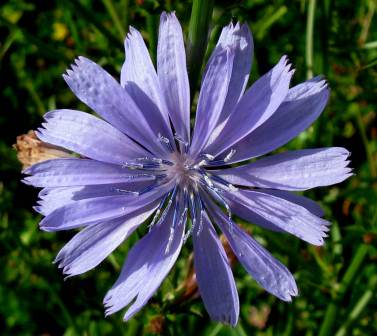 I love the sky blue color of chicory (Cichorium intybus.) Originally from Europe, chicory has escaped and can now be found in sunny meadows and along roadsides here in New Hampshire. I found a large colony of plants growing on a local riverbank. It is said that chicory flowers open and close at the same time each day, but I’ve never witnessed this. Roasted and ground chicory root has long been used as a coffee substitute and the bitter tasting young leaves are called endive, escarole or radicchio.
I love the sky blue color of chicory (Cichorium intybus.) Originally from Europe, chicory has escaped and can now be found in sunny meadows and along roadsides here in New Hampshire. I found a large colony of plants growing on a local riverbank. It is said that chicory flowers open and close at the same time each day, but I’ve never witnessed this. Roasted and ground chicory root has long been used as a coffee substitute and the bitter tasting young leaves are called endive, escarole or radicchio.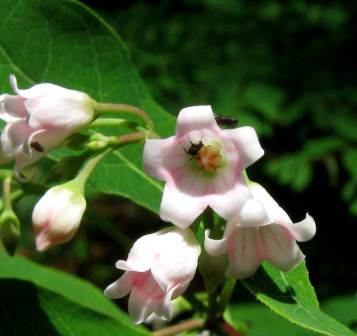 I found a large stand of spreading dogbane (apocynum androsaemifolium ) plants in a forest clearing that had ants all over them. The plant is supposed to be poisonous to dogs, but I’m not sure how anyone really knows for sure if it is or isn’t. Anyhow, the Apocynum part of the scientific name means “away dog,” and for some reason I find this hilarious. This plant is a relative of milkweed with pinkish, bell shaped flowers that smell almost like lilac. The insides of the flowers have pink stripes. I haven’t been able to find out why ants like the plant so much, but I did find out why one of its common names is flytrap; small insects that come for its nectar but are not the right size to pollinate the flowers can get trapped by their tongues in the flowers and are left dangling there. This native plant is considered toxic.
I found a large stand of spreading dogbane (apocynum androsaemifolium ) plants in a forest clearing that had ants all over them. The plant is supposed to be poisonous to dogs, but I’m not sure how anyone really knows for sure if it is or isn’t. Anyhow, the Apocynum part of the scientific name means “away dog,” and for some reason I find this hilarious. This plant is a relative of milkweed with pinkish, bell shaped flowers that smell almost like lilac. The insides of the flowers have pink stripes. I haven’t been able to find out why ants like the plant so much, but I did find out why one of its common names is flytrap; small insects that come for its nectar but are not the right size to pollinate the flowers can get trapped by their tongues in the flowers and are left dangling there. This native plant is considered toxic.  Years ago I worked as a gardener for a lady who had an older widower as a neighbor. One day the widower asked me to stop by his house for a minute when I was through. I stopped in to see him as he asked and he told me if I could identify the hedge in his front yard he would hire me to be his gardener right then and there. To make a long story short I told him that his hedge was Purple flowering raspberry and I ended up working for him until he died. Purple flowering raspberry (Rubus odoratus) is in the rose family and might be mistaken for a rose if it wasn’t for its large, maple-like leaves. The native shrub will reach 3-6 feet tall and twice as wide under the right conditions. I found the one pictured growing near a culvert on the side of the road. I don’t know who the visitor was.
Years ago I worked as a gardener for a lady who had an older widower as a neighbor. One day the widower asked me to stop by his house for a minute when I was through. I stopped in to see him as he asked and he told me if I could identify the hedge in his front yard he would hire me to be his gardener right then and there. To make a long story short I told him that his hedge was Purple flowering raspberry and I ended up working for him until he died. Purple flowering raspberry (Rubus odoratus) is in the rose family and might be mistaken for a rose if it wasn’t for its large, maple-like leaves. The native shrub will reach 3-6 feet tall and twice as wide under the right conditions. I found the one pictured growing near a culvert on the side of the road. I don’t know who the visitor was.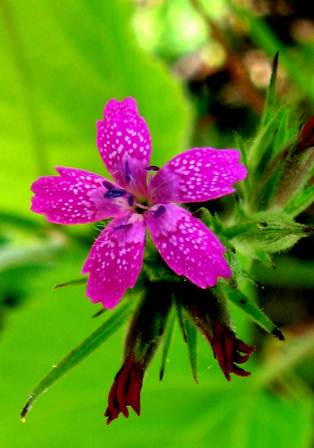 In one post a while back I showed a photo of maiden pinks (Dianthus deltoids) and said that they were almost identical to the Deptford Pink (Dianthus armeria) shown in this photo. One difference between the two plants is petal width; Deptford pink petals are much narrower than those of the maiden pinks and this gives the flower an overall smaller look. Maiden pinks also have a much darker circle in the center of each flower. As the photo shows, the circle on Deptford pink petals is barely noticeable. Both plants were imported from Europe and have escaped gardens. They can now be seen along roadsides and in sunny meadows. Deptford pinks can be found in the wild in all but 3 states. They are more common than maiden pinks.
In one post a while back I showed a photo of maiden pinks (Dianthus deltoids) and said that they were almost identical to the Deptford Pink (Dianthus armeria) shown in this photo. One difference between the two plants is petal width; Deptford pink petals are much narrower than those of the maiden pinks and this gives the flower an overall smaller look. Maiden pinks also have a much darker circle in the center of each flower. As the photo shows, the circle on Deptford pink petals is barely noticeable. Both plants were imported from Europe and have escaped gardens. They can now be seen along roadsides and in sunny meadows. Deptford pinks can be found in the wild in all but 3 states. They are more common than maiden pinks.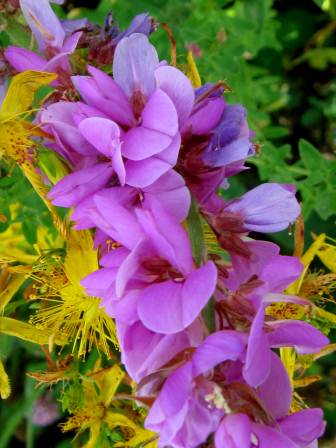 This is a photo of the beautiful showy tick trefoil (Desmodium canadense.) This plant is uncommon here and I was surprised to find a large colony of them growing in gravel at the local landfill. This plant is in the pea family and its leaves grow in threes. Tick trefoils are called that because the seeds cling to clothing and animal fur in the same way ticks do. These plants were about 4 feet tall and the flower spikes were densely packed with flowers as the photo shows. Often the flowers are scattered here and there along the stem. The flowers in the background are St. Johnswort.
This is a photo of the beautiful showy tick trefoil (Desmodium canadense.) This plant is uncommon here and I was surprised to find a large colony of them growing in gravel at the local landfill. This plant is in the pea family and its leaves grow in threes. Tick trefoils are called that because the seeds cling to clothing and animal fur in the same way ticks do. These plants were about 4 feet tall and the flower spikes were densely packed with flowers as the photo shows. Often the flowers are scattered here and there along the stem. The flowers in the background are St. Johnswort. 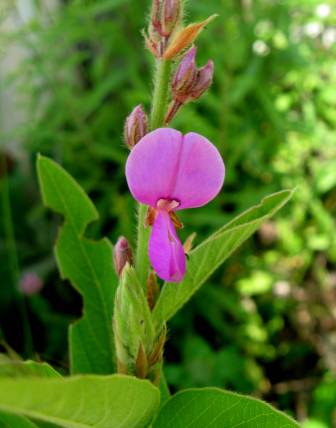 This flower could be that of a Large Bract Tick Trefoil (Desmodium cuspidatum ) and if that is the case then this is the first time it has been seen in New Hampshire since 1906. The problem is I have no way of knowing for sure. When I took photos of it I wasn’t sure what it was and once I thought I had identified it I went back to where it grew and couldn’t find it among all the other plants because it was no longer blooming. It is believed that this plant needs areas that have been burned by fire to colonize and because forest fires are put out quickly now in New England, the plant is becoming increasingly rare and even extinct in many states. There were only 20 known occurrences in 1966 in all of New England. The only other plant this could be is the hoary tick trefoil (Desmodium canescens.) Unfortunately I’ll have to wait a year to find out. If anyone thinks they can identify this plant from pictures I’d like to talk to you.
This flower could be that of a Large Bract Tick Trefoil (Desmodium cuspidatum ) and if that is the case then this is the first time it has been seen in New Hampshire since 1906. The problem is I have no way of knowing for sure. When I took photos of it I wasn’t sure what it was and once I thought I had identified it I went back to where it grew and couldn’t find it among all the other plants because it was no longer blooming. It is believed that this plant needs areas that have been burned by fire to colonize and because forest fires are put out quickly now in New England, the plant is becoming increasingly rare and even extinct in many states. There were only 20 known occurrences in 1966 in all of New England. The only other plant this could be is the hoary tick trefoil (Desmodium canescens.) Unfortunately I’ll have to wait a year to find out. If anyone thinks they can identify this plant from pictures I’d like to talk to you. This plant is far more common. Bittersweet Nightshade (Solanum dulcamara) is a climbing vine in the potato family that can grow to 10 feet long and can be seen growing on trees and shrubs. One of the more noticeable things about this plant is its unusual odor when it is bruised-it really stinks. It is from Europe and Asia and is considered an invasive weed. The flowers will become berries that are bright red in the fall. All parts of this plant are considered toxic. Other names for bittersweet nightshade are bittersweet, bitter nightshade, blue bindweed, blue nightshade, climbing nightshade, dwale, dulcamara, European bittersweet, fellenwort, fevertwig, morel, nightshade, poisonberry, poisonflower, pushion-berry, scarlet berry, skawcoo, snakeberry, tether-devil, violet-bloom, wolfgrape, and woody nightshade.
This plant is far more common. Bittersweet Nightshade (Solanum dulcamara) is a climbing vine in the potato family that can grow to 10 feet long and can be seen growing on trees and shrubs. One of the more noticeable things about this plant is its unusual odor when it is bruised-it really stinks. It is from Europe and Asia and is considered an invasive weed. The flowers will become berries that are bright red in the fall. All parts of this plant are considered toxic. Other names for bittersweet nightshade are bittersweet, bitter nightshade, blue bindweed, blue nightshade, climbing nightshade, dwale, dulcamara, European bittersweet, fellenwort, fevertwig, morel, nightshade, poisonberry, poisonflower, pushion-berry, scarlet berry, skawcoo, snakeberry, tether-devil, violet-bloom, wolfgrape, and woody nightshade.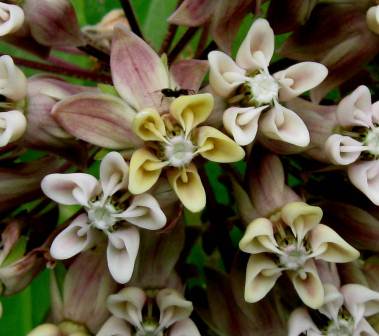 It’s hard to appreciate the beauty of common milkweed (Asclepias syriaca) until you can really see each individual flower. Flowers are usually pink, but they can be purple, creamy, or yellowish, and will often have different colored flowers on each plant as the photo shows. These beautiful, fragrant plants are underrated because they are very important to a huge number of insects, including monarch butterflies. When I was a boy I learned a lot about spiders by sitting in a field of milkweed. Common milkweed has seedpods that are pricklier than other milkweeds.
It’s hard to appreciate the beauty of common milkweed (Asclepias syriaca) until you can really see each individual flower. Flowers are usually pink, but they can be purple, creamy, or yellowish, and will often have different colored flowers on each plant as the photo shows. These beautiful, fragrant plants are underrated because they are very important to a huge number of insects, including monarch butterflies. When I was a boy I learned a lot about spiders by sitting in a field of milkweed. Common milkweed has seedpods that are pricklier than other milkweeds.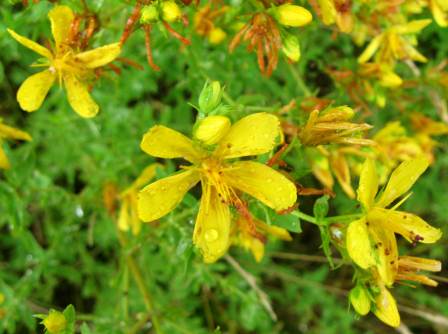 St, Johnswort (Hypericum perforatum) has finally started blooming here. It seems like it is late this year, but with many other plants blooming weeks early it’s hard to tell. For years this plant has been touted as a miracle cure for everything from stopping smoking to depression. According to the Mayo clinic “Overall, the scientific evidence supports the effectiveness of St. Johnswort in mild-to-moderate major depression. The evidence in severe major depression remains unclear.” St. Johnswort was introduced from Europe in the 1700s and is now considered an invasive weed. The 5 yellowish orange flower petals have small black dots along their margins which, along with visible translucent glands on the leaves make St. Johnswort very easy to identify. The plant is toxic to livestock.
St, Johnswort (Hypericum perforatum) has finally started blooming here. It seems like it is late this year, but with many other plants blooming weeks early it’s hard to tell. For years this plant has been touted as a miracle cure for everything from stopping smoking to depression. According to the Mayo clinic “Overall, the scientific evidence supports the effectiveness of St. Johnswort in mild-to-moderate major depression. The evidence in severe major depression remains unclear.” St. Johnswort was introduced from Europe in the 1700s and is now considered an invasive weed. The 5 yellowish orange flower petals have small black dots along their margins which, along with visible translucent glands on the leaves make St. Johnswort very easy to identify. The plant is toxic to livestock. St. Johnswort leaves have small translucent glands that make them appear pierced when held up to the light. They can be clearly seen in this photo.
St. Johnswort leaves have small translucent glands that make them appear pierced when held up to the light. They can be clearly seen in this photo.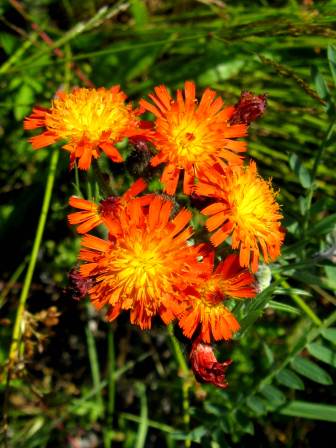 I wasn’t sure if I was going to see any orange hawkweed (Hieracium aurantiacum) this year, but it finally appeared along the roads recently. Orange hawkweed was introduced from Europe as a garden ornamental and, as the old familiar story goes, has escaped and is now considered a noxious weed. Hawkweed plants can produce between 10 and 30 flowering stems and can have 5 to 30 flower heads per stem. A single flower head can produce between 12 and 50 tiny black seeds, so when you do the math it is obvious that these plants are here to stay. They are much harder to control than dandelions. Though it’s easy to find many reasons to hate such a plant, we don’t have many orange wildflowers in this part of the country and I enjoy seeing it.
I wasn’t sure if I was going to see any orange hawkweed (Hieracium aurantiacum) this year, but it finally appeared along the roads recently. Orange hawkweed was introduced from Europe as a garden ornamental and, as the old familiar story goes, has escaped and is now considered a noxious weed. Hawkweed plants can produce between 10 and 30 flowering stems and can have 5 to 30 flower heads per stem. A single flower head can produce between 12 and 50 tiny black seeds, so when you do the math it is obvious that these plants are here to stay. They are much harder to control than dandelions. Though it’s easy to find many reasons to hate such a plant, we don’t have many orange wildflowers in this part of the country and I enjoy seeing it.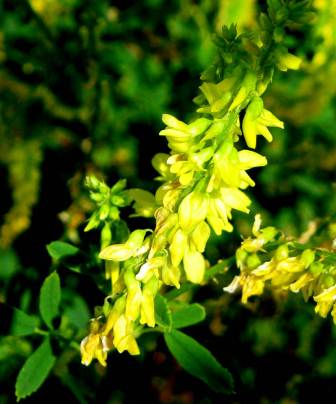 In my last post I talked about finding white sweet clover (Melilotus alba) in a sunny, wet meadow. I found Yellow Sweet Clover (Melilotus officinalis) growing in a hot, dry, gravelly area that really didn’t look like it could support much plant life, but yellow sweet clover was thriving there, so it has different requirements than its white relative. This plant smells very sweet and needs full sun to be happy. It was imported from Europe and Asia for agricultural purposes and has become a major source of nectar for honey bees.
In my last post I talked about finding white sweet clover (Melilotus alba) in a sunny, wet meadow. I found Yellow Sweet Clover (Melilotus officinalis) growing in a hot, dry, gravelly area that really didn’t look like it could support much plant life, but yellow sweet clover was thriving there, so it has different requirements than its white relative. This plant smells very sweet and needs full sun to be happy. It was imported from Europe and Asia for agricultural purposes and has become a major source of nectar for honey bees. Yellow Sweet Clover, at 2-7 feet tall and often 3 feet or more wide, can easily be mistaken for a shrub.
Yellow Sweet Clover, at 2-7 feet tall and often 3 feet or more wide, can easily be mistaken for a shrub.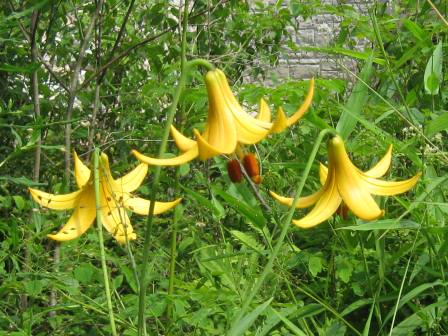 There is a bridge over a local stream where you can stand and look down at an island that is fairly large and is covered with interesting looking plants. This island has always been a bit of a tease because I had no way to get onto it. Until this year that is-we haven’t had any significant rainfall for a while now and the water level of the stream has dropped enough so I could walk out to the island on a narrow slice of almost dry ground. And there I found these Canada lilies (Lilium canadense) growing. These beautiful flowers grow on plants that are about 3-4 feet tall. The flowers can be yellow, orange, or red.
There is a bridge over a local stream where you can stand and look down at an island that is fairly large and is covered with interesting looking plants. This island has always been a bit of a tease because I had no way to get onto it. Until this year that is-we haven’t had any significant rainfall for a while now and the water level of the stream has dropped enough so I could walk out to the island on a narrow slice of almost dry ground. And there I found these Canada lilies (Lilium canadense) growing. These beautiful flowers grow on plants that are about 3-4 feet tall. The flowers can be yellow, orange, or red. 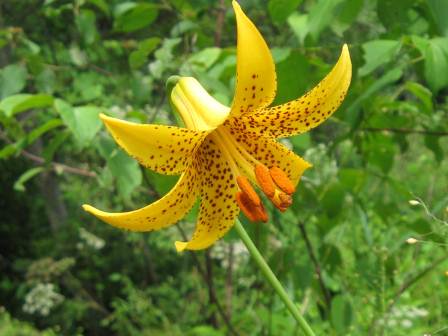 Canada lilies (Lilium canadense) have purple spotted throats that aren’t always seen because the flowers almost always face downwards. This plant is unusual because it prefers wet places. Most lilies, and in fact most plants that grow from bulbs, do not like soil that stays wet. They prefer sandy, well-drained soil.
Canada lilies (Lilium canadense) have purple spotted throats that aren’t always seen because the flowers almost always face downwards. This plant is unusual because it prefers wet places. Most lilies, and in fact most plants that grow from bulbs, do not like soil that stays wet. They prefer sandy, well-drained soil.
You cannot perceive beauty but with a serene mind ~ Henry David Thoreau
As always, I appreciate you stopping in.

